



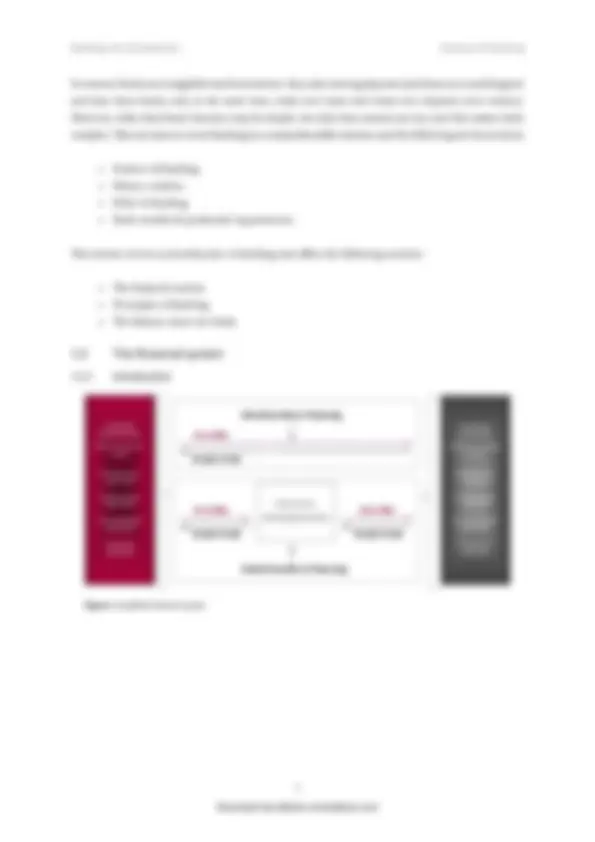
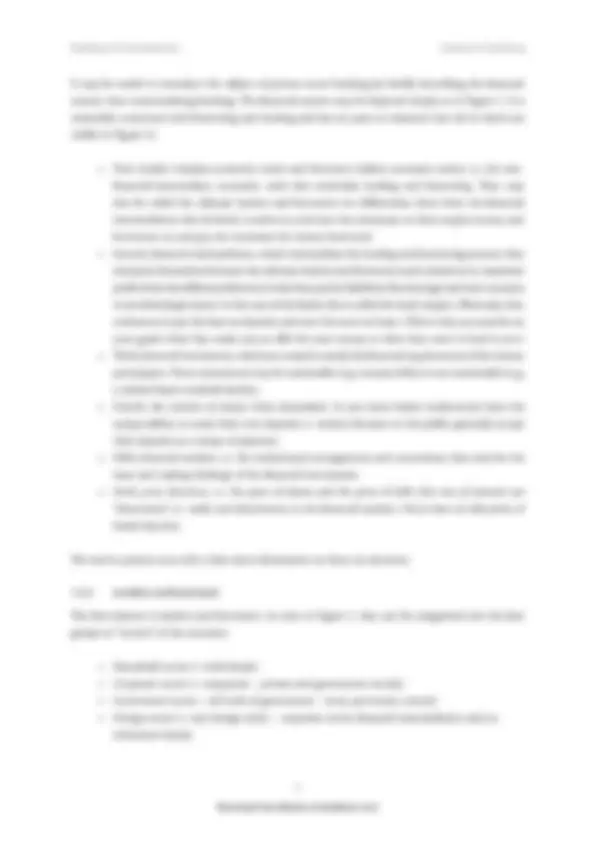
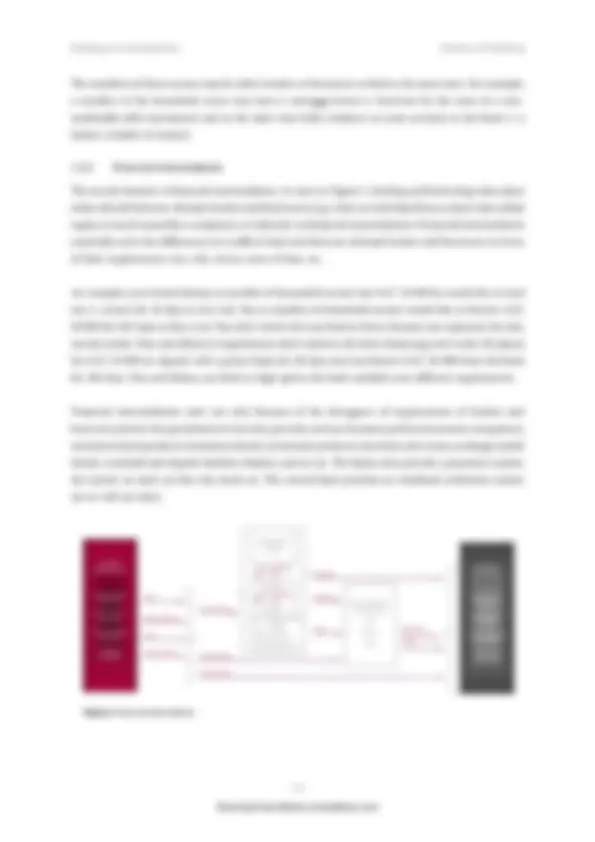


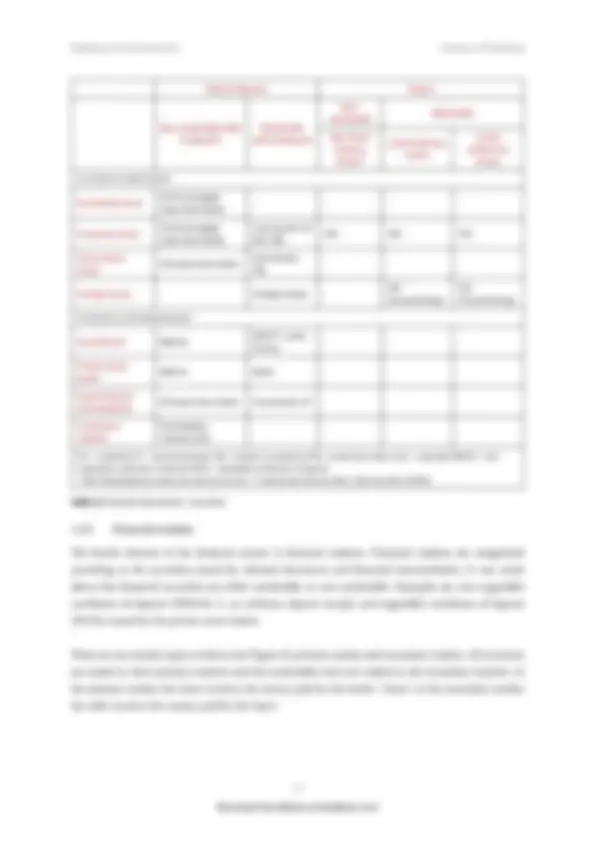
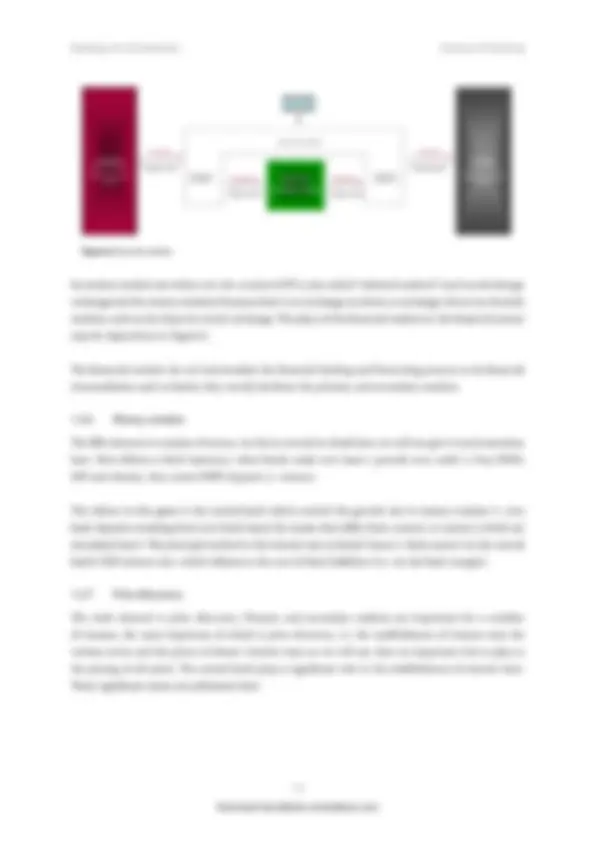
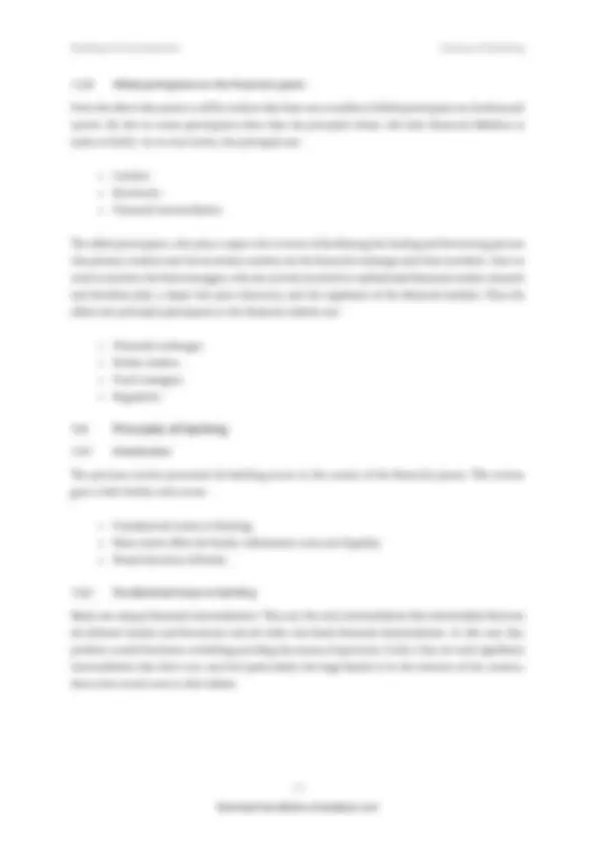

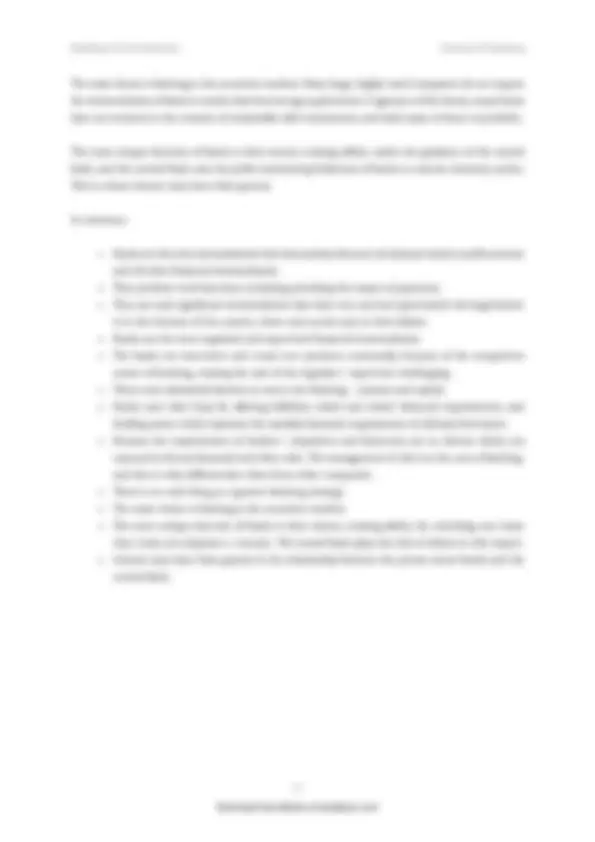
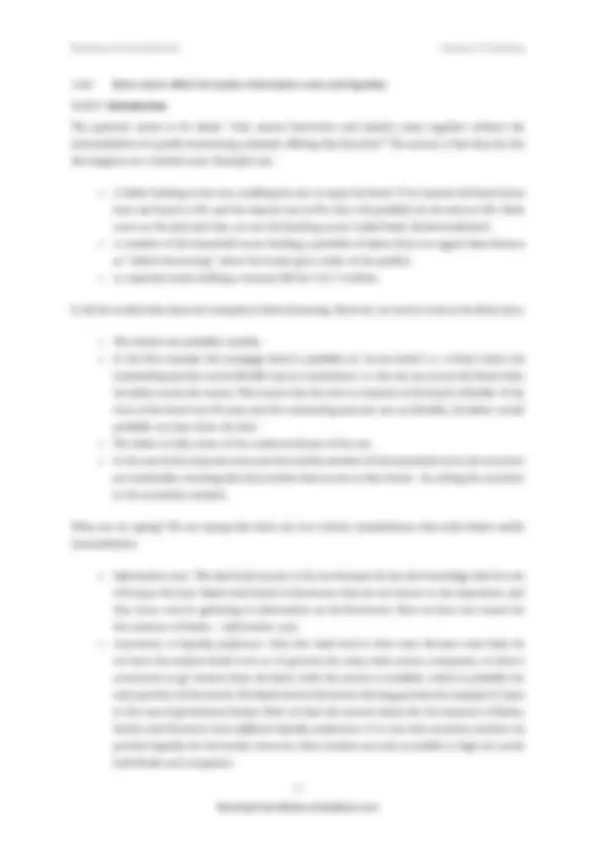

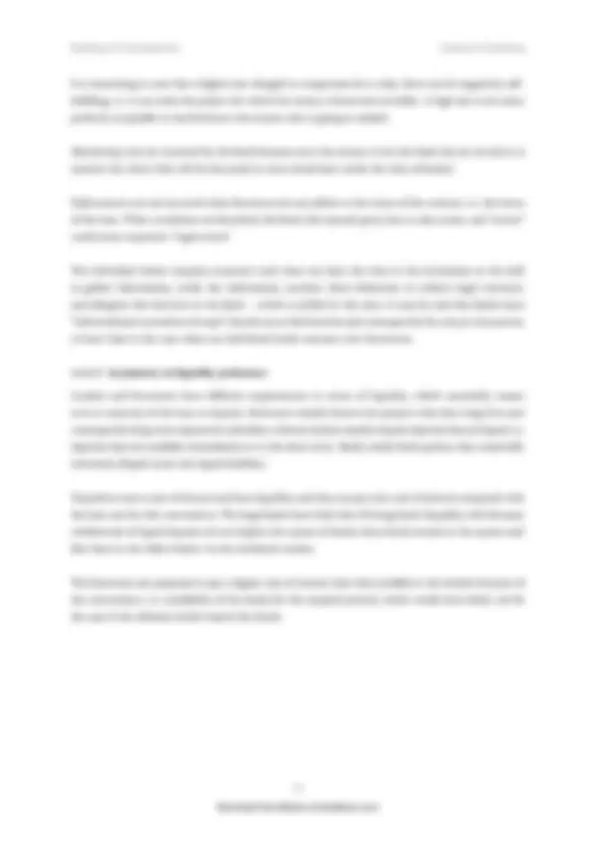
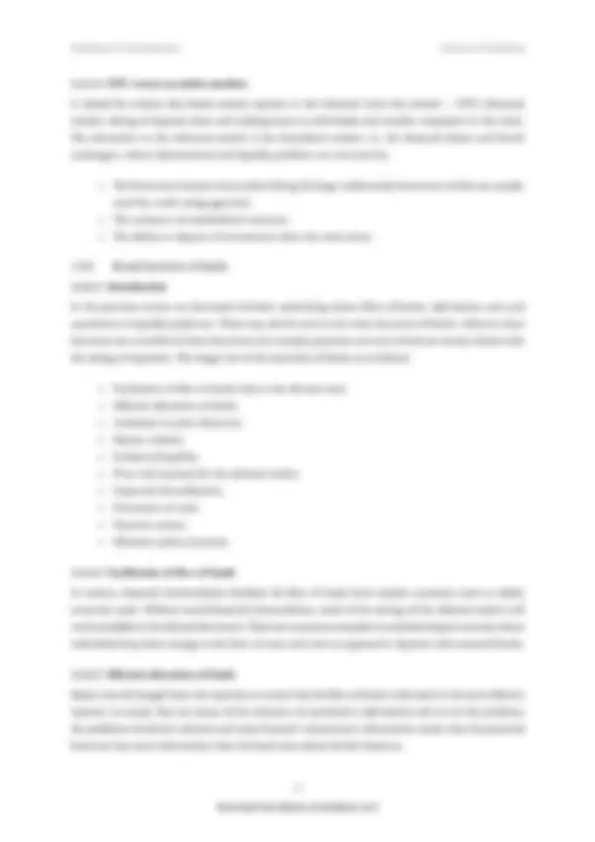
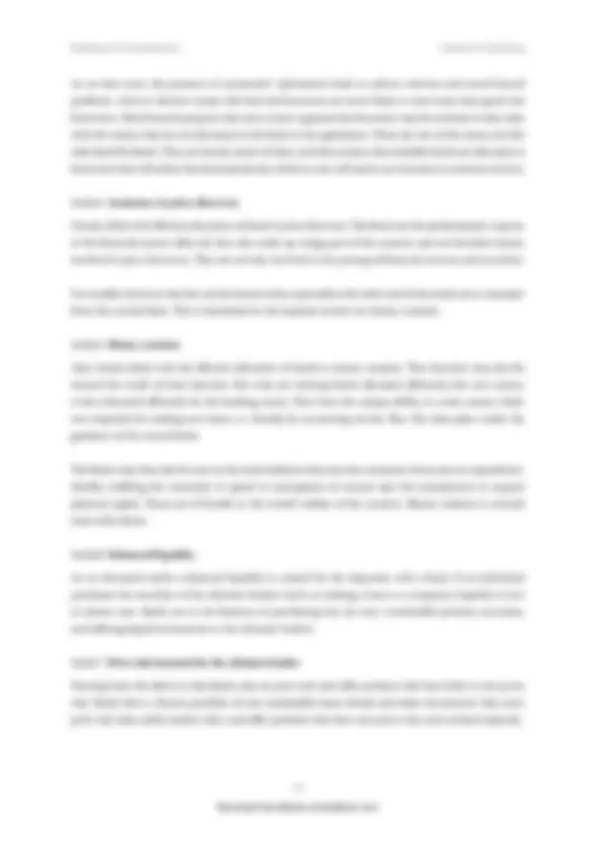

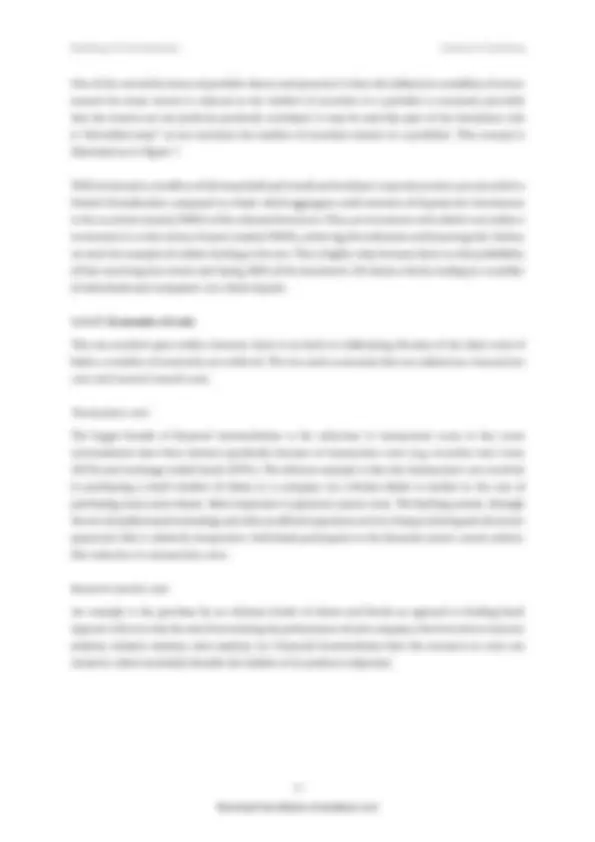
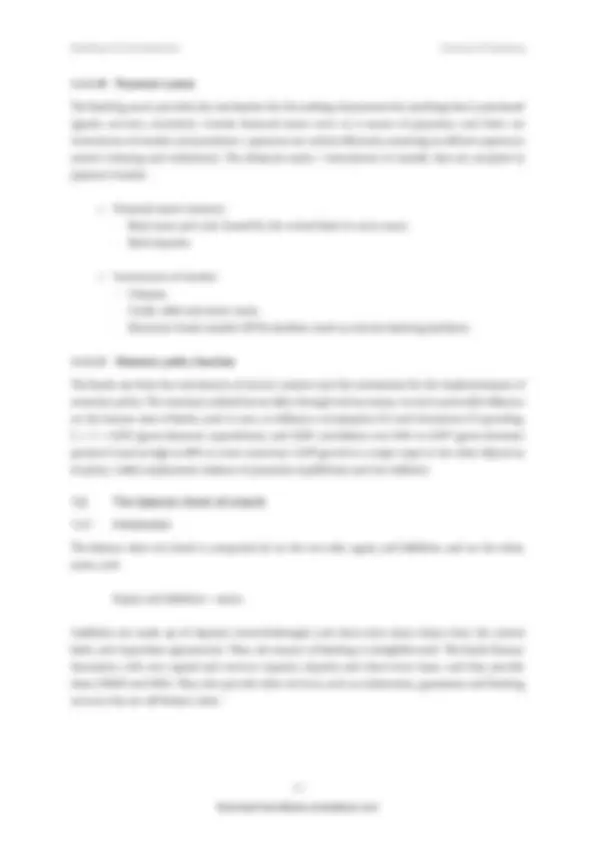


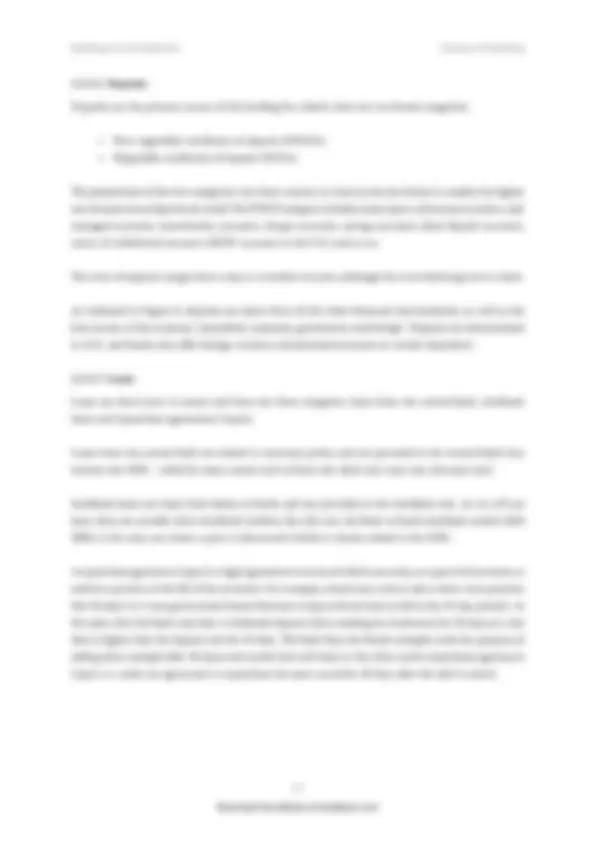
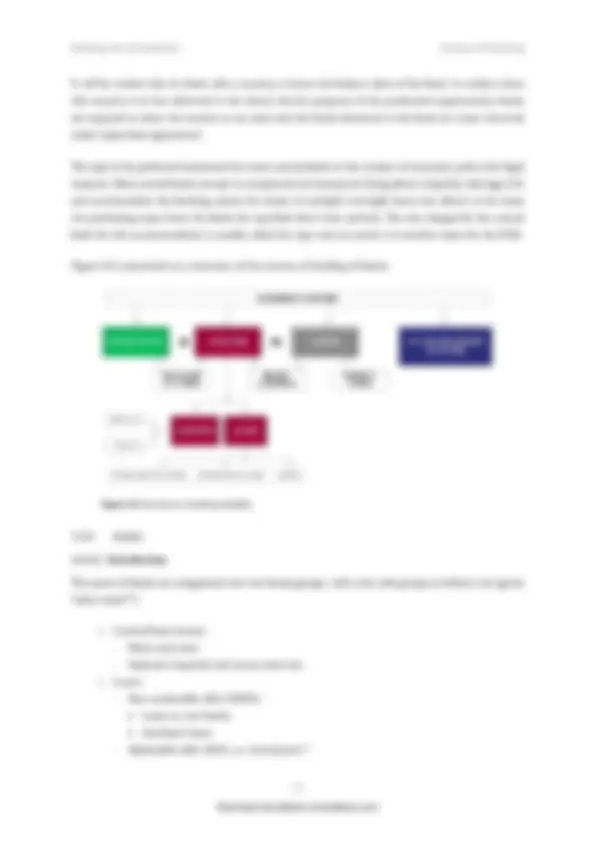
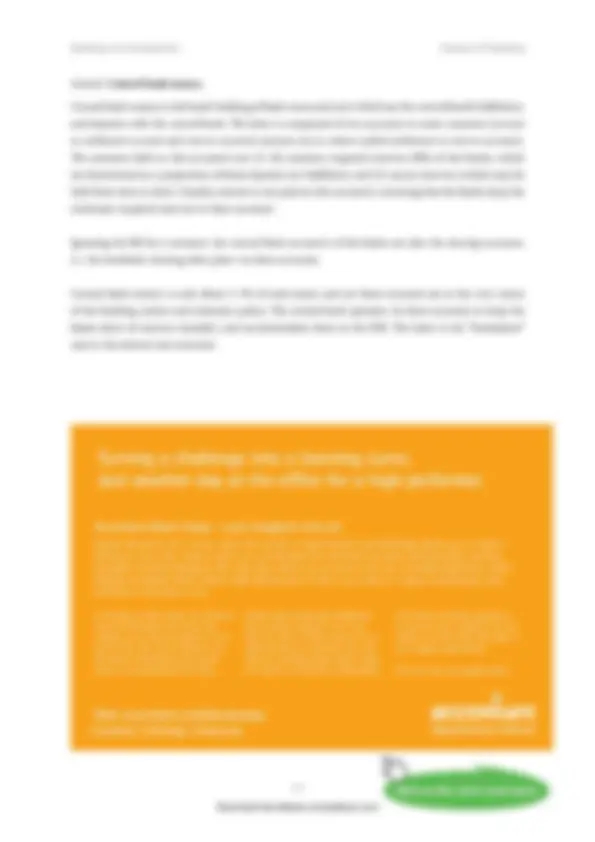
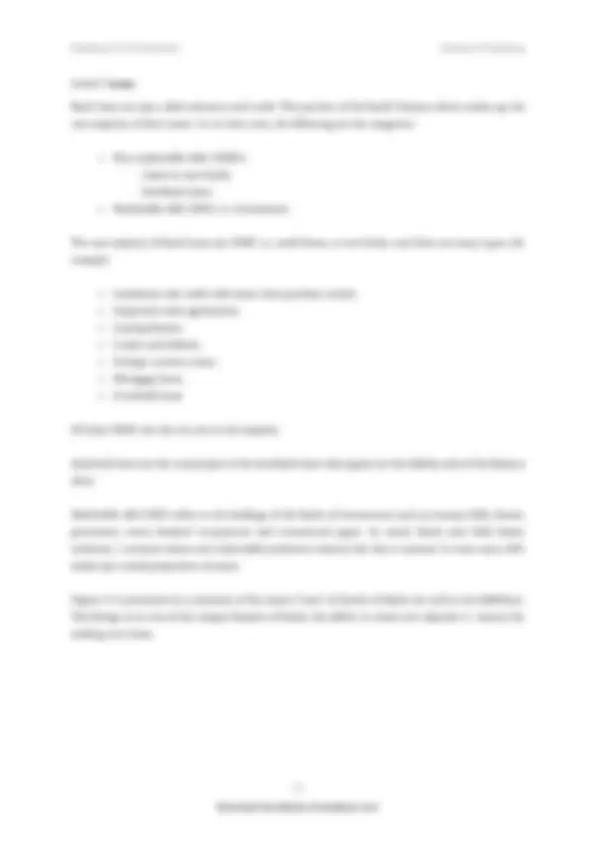
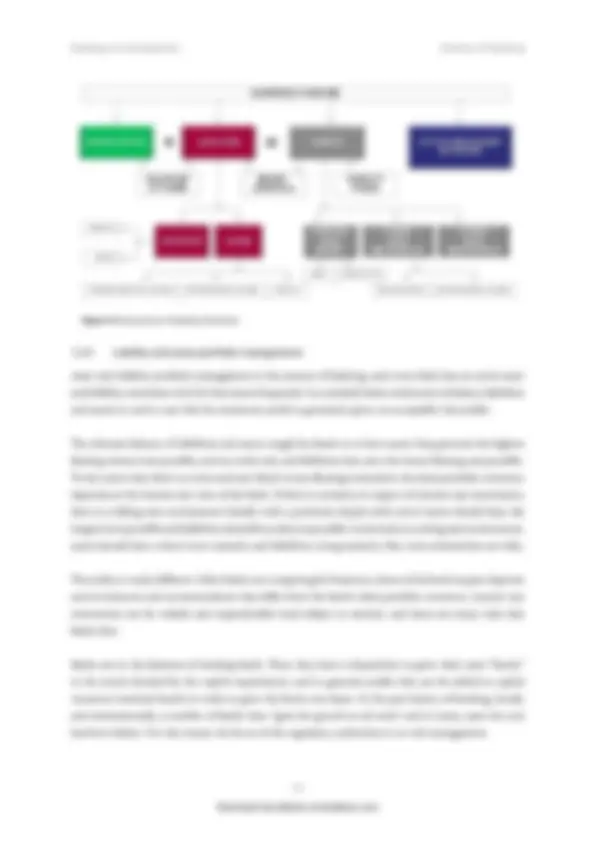

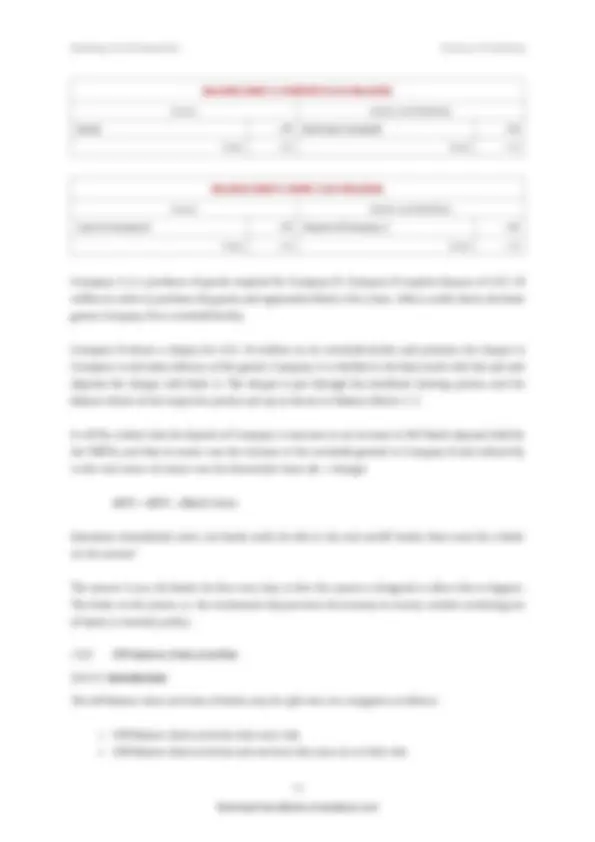
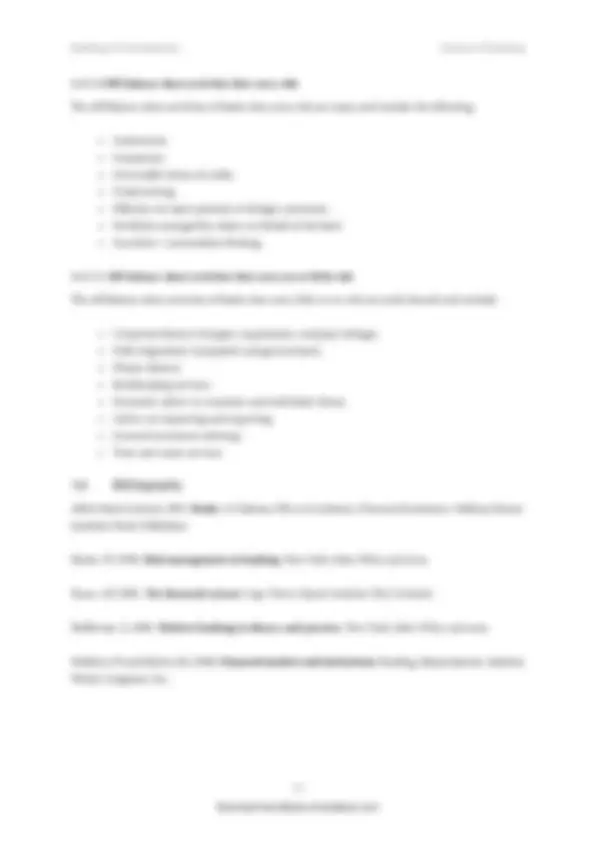

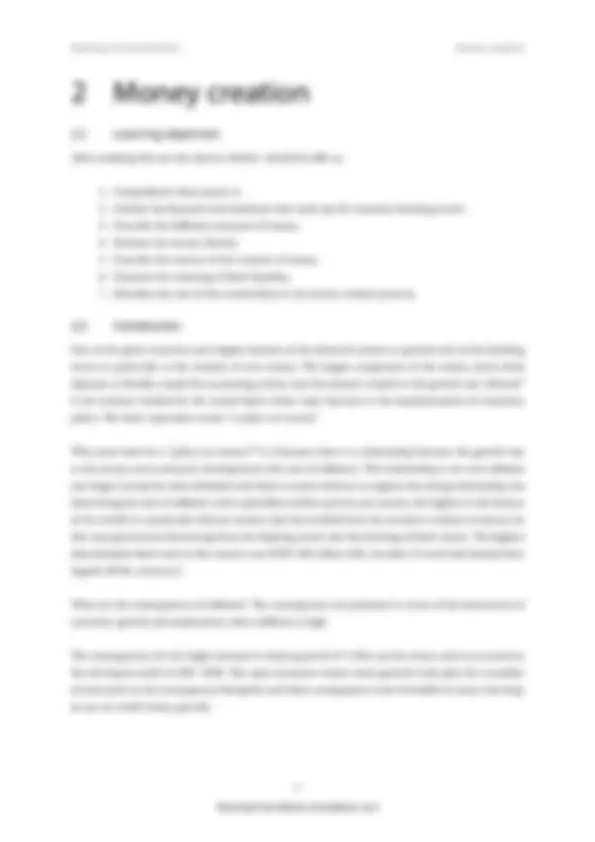
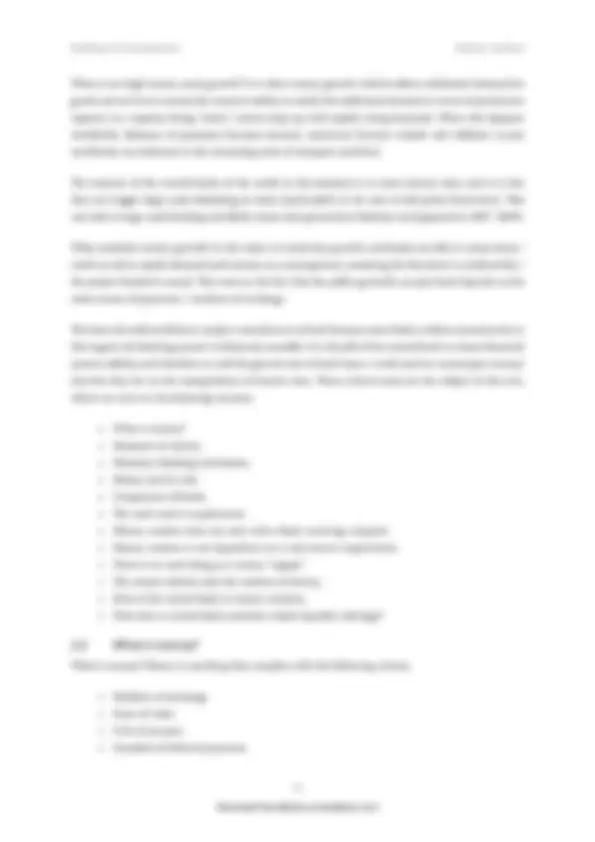

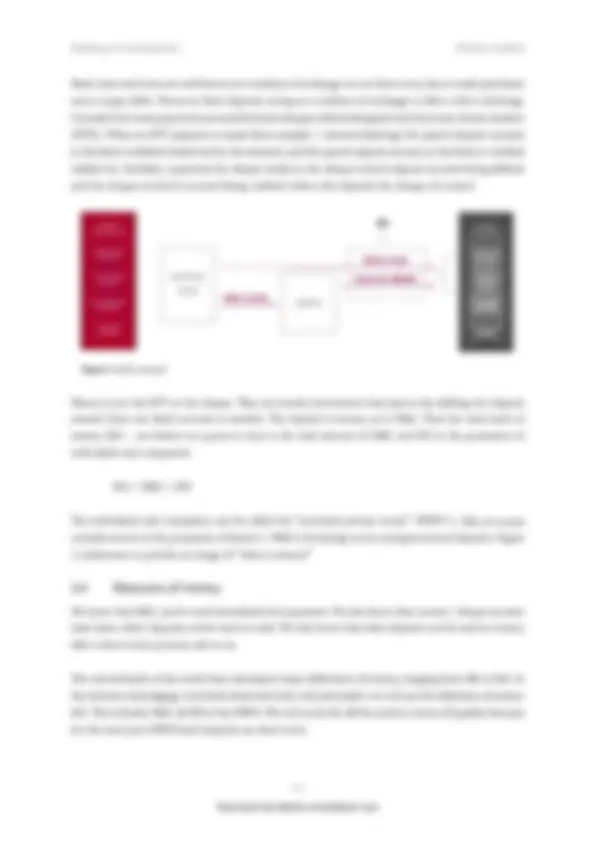
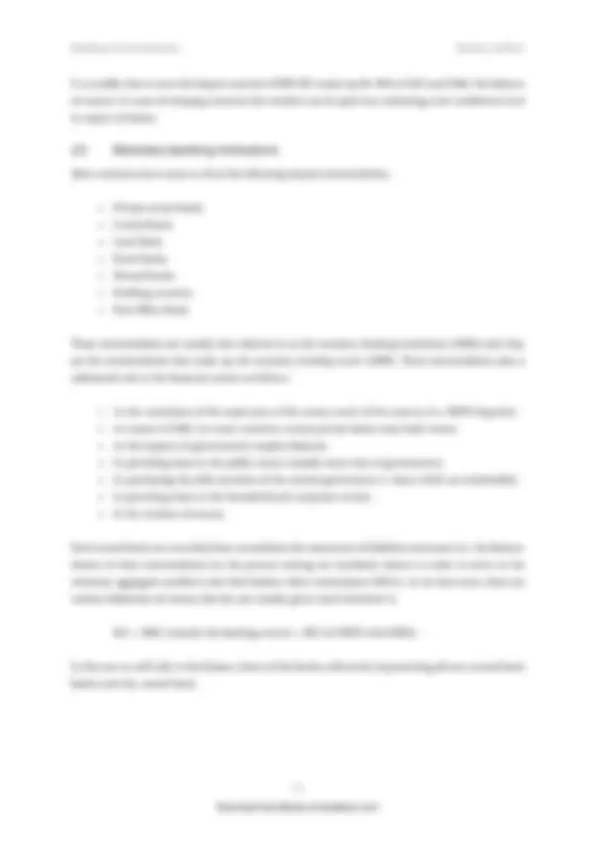

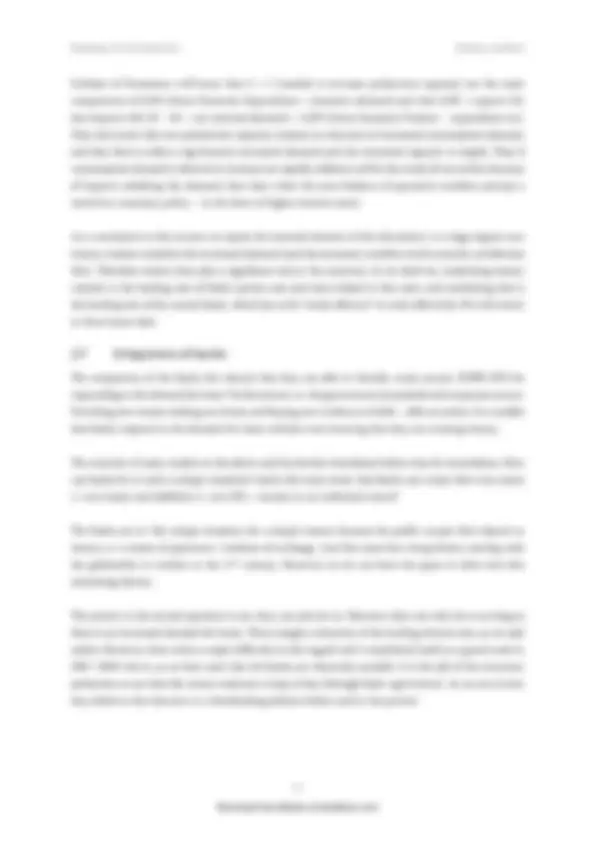
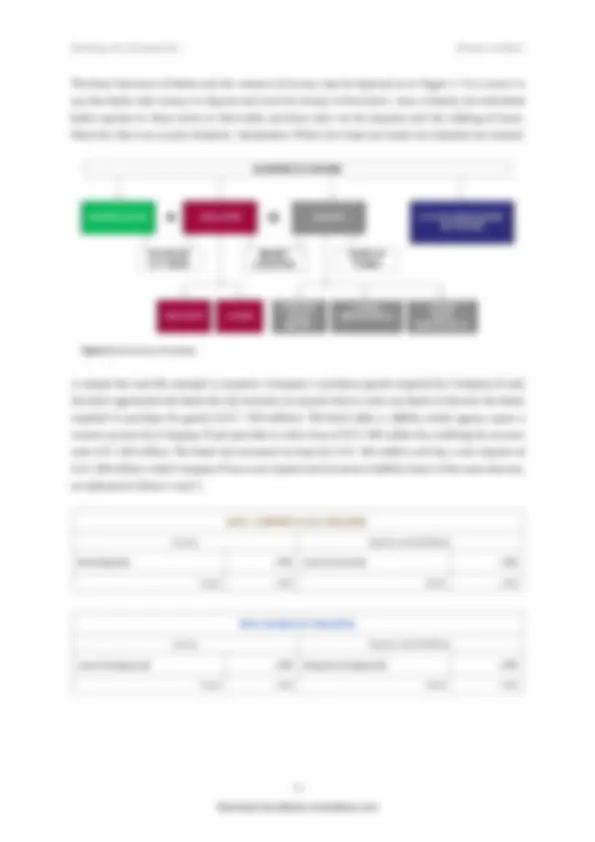

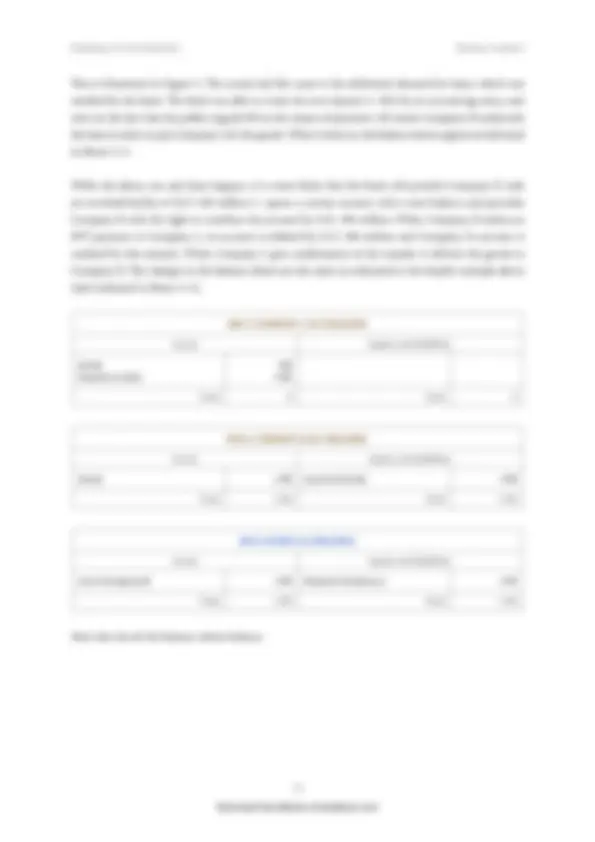
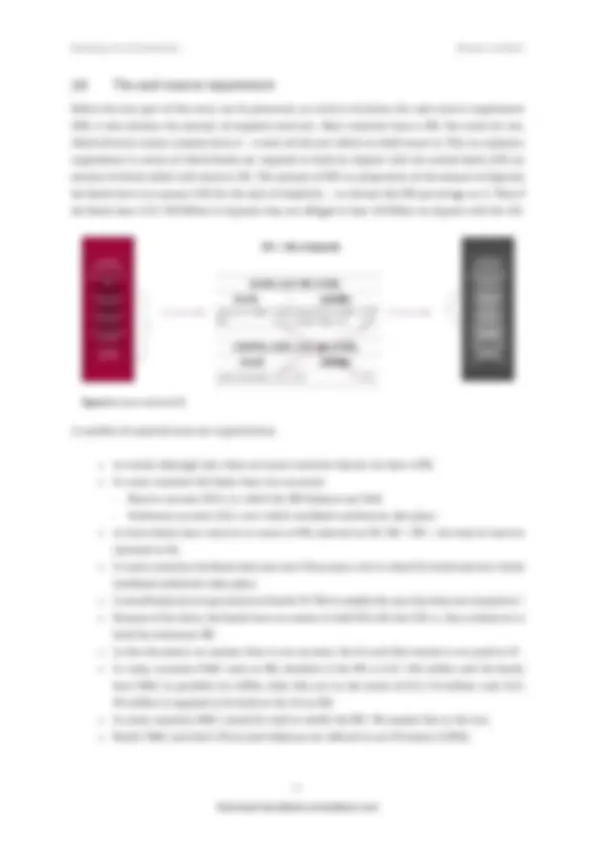

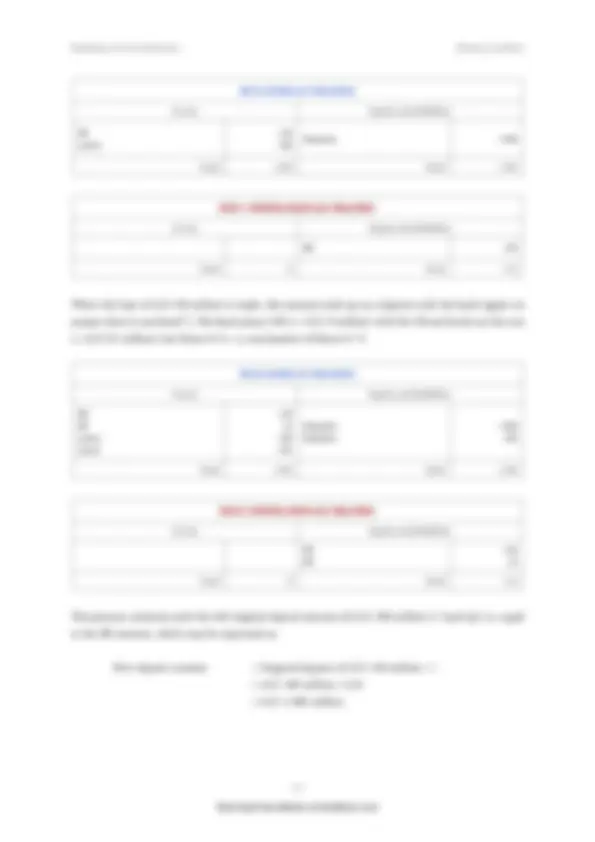
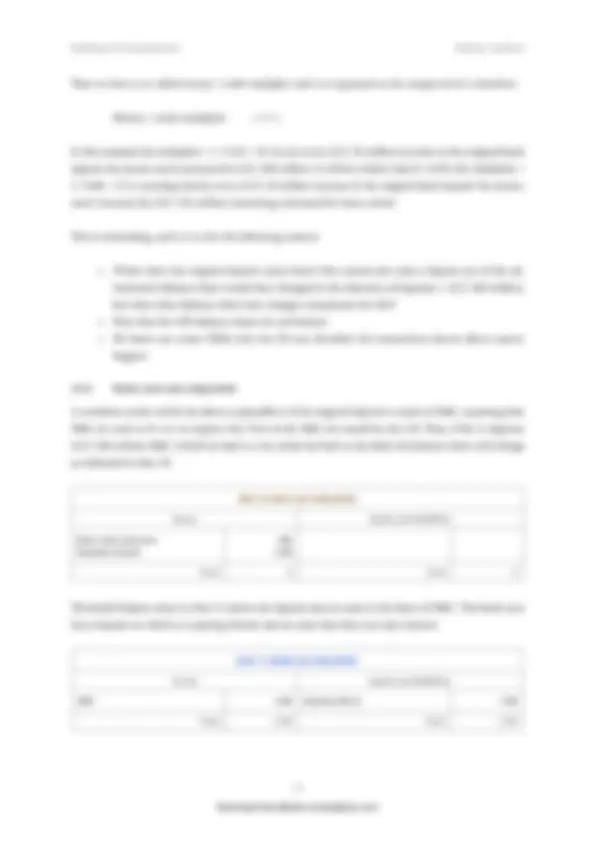

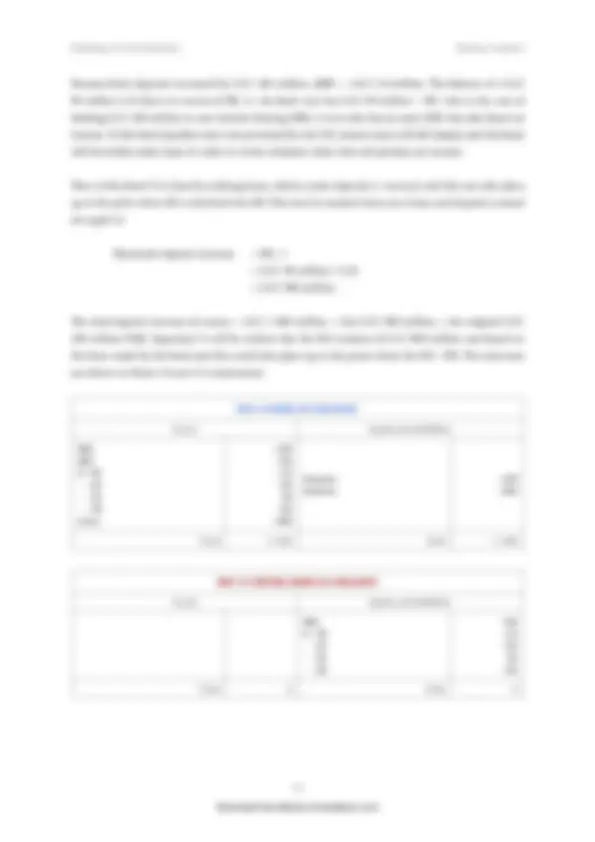
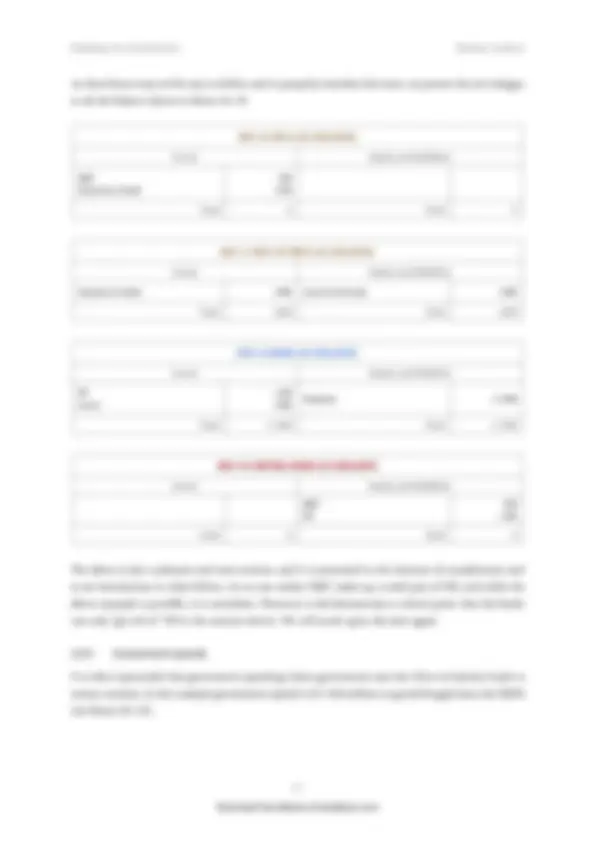

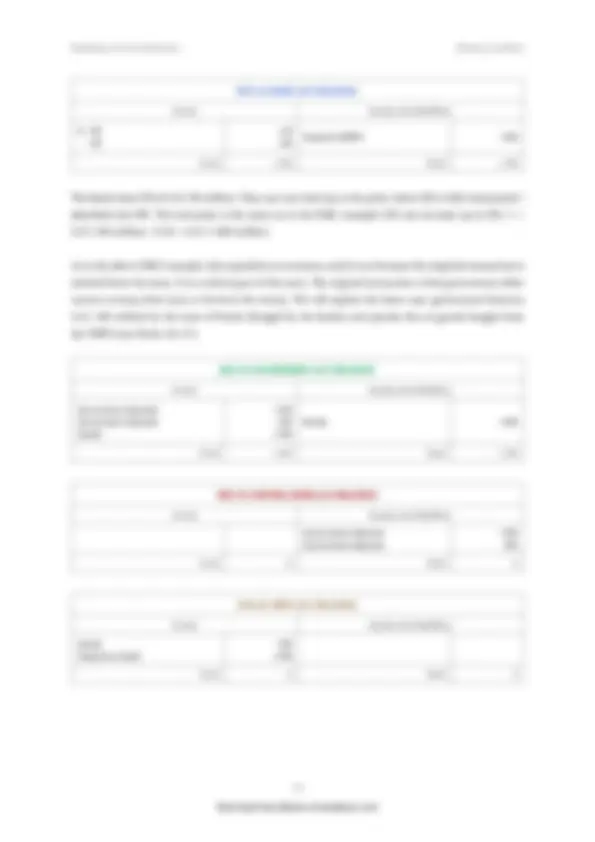
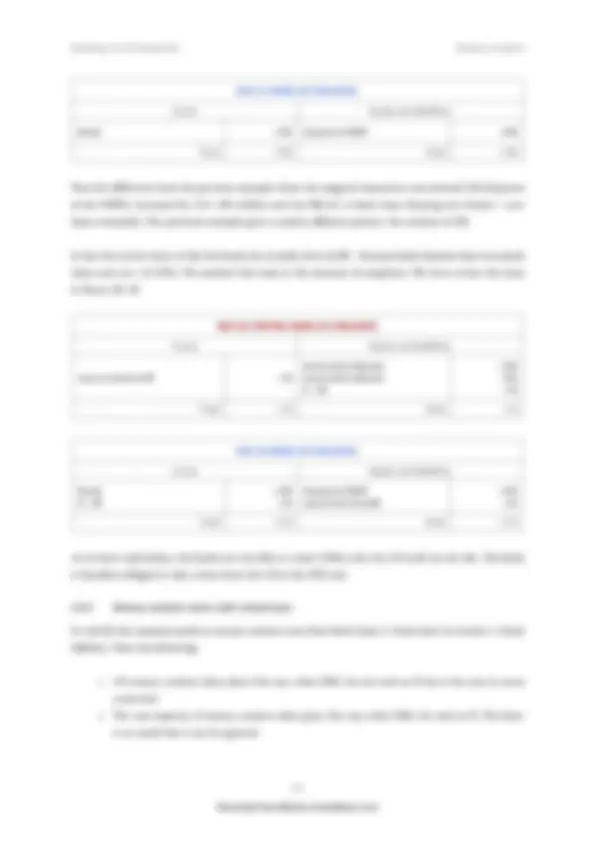

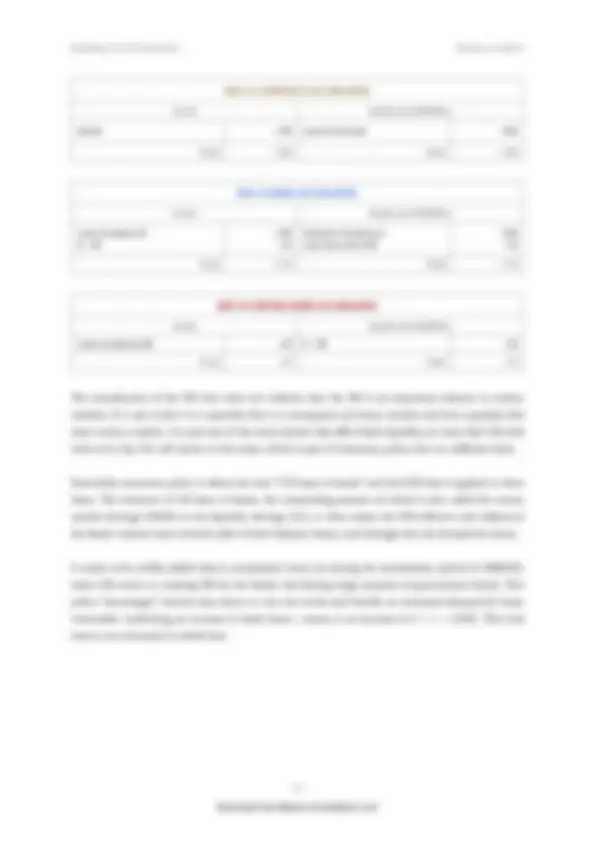
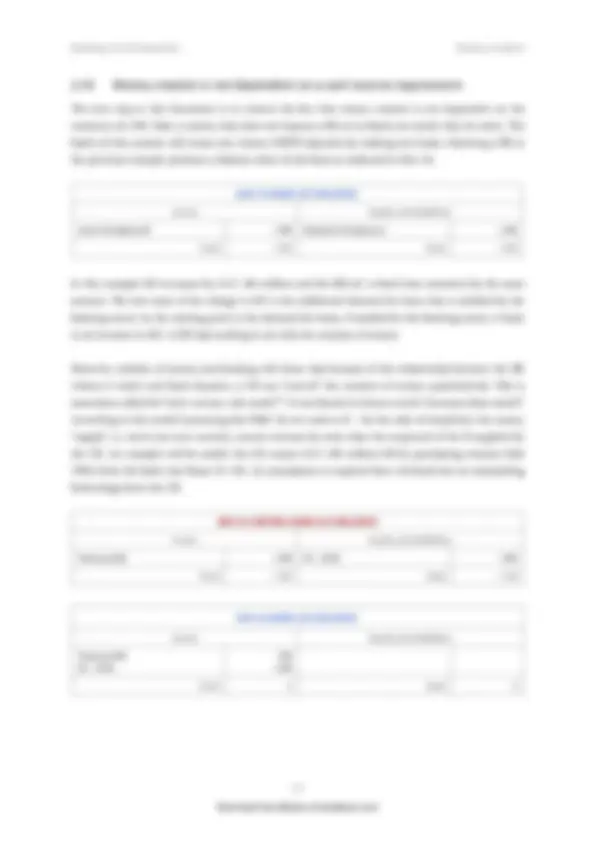

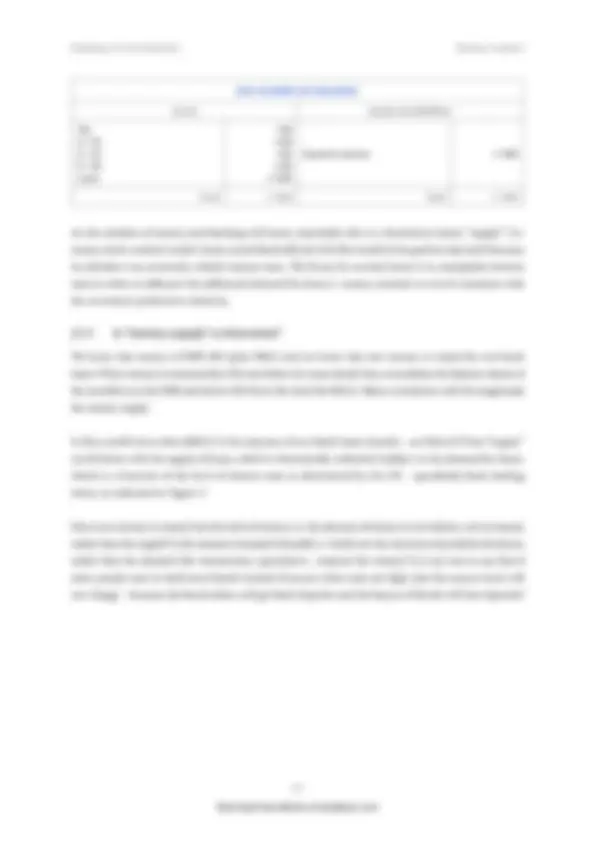
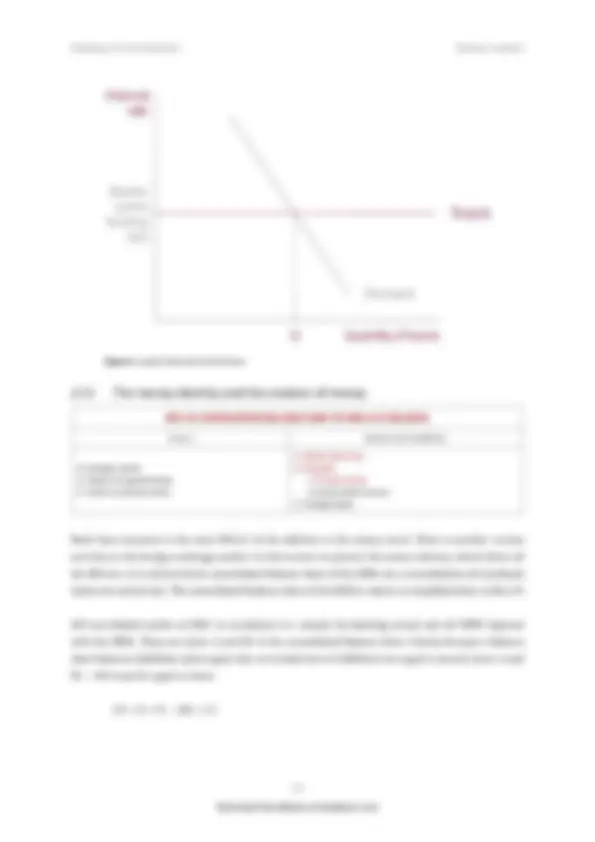

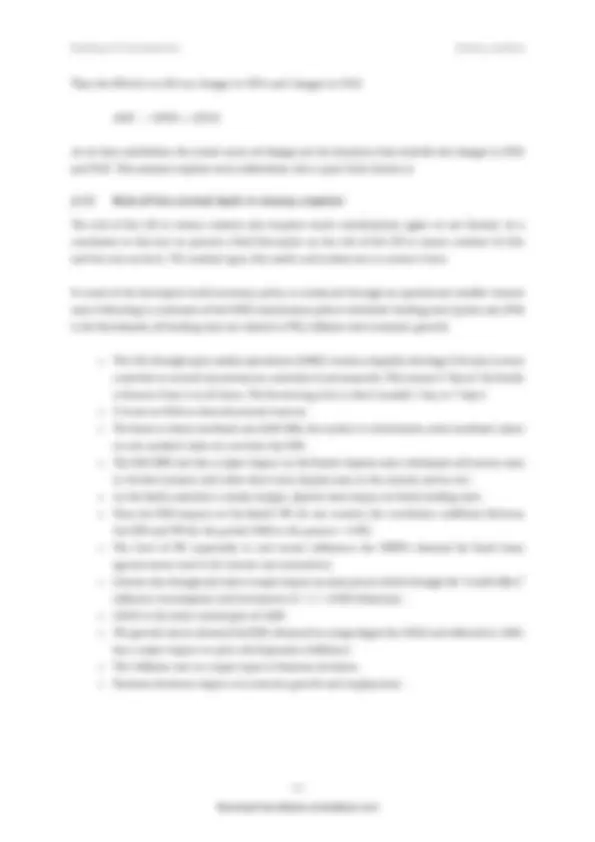
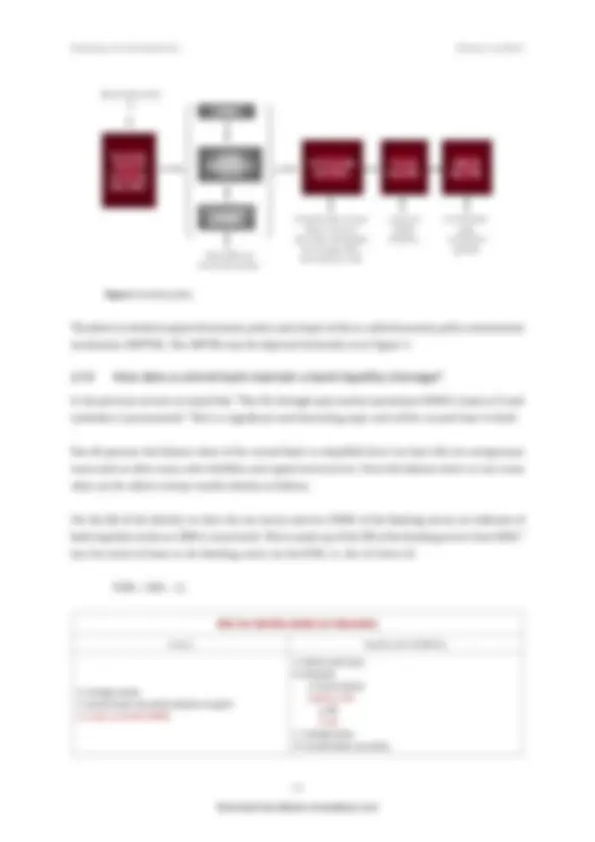

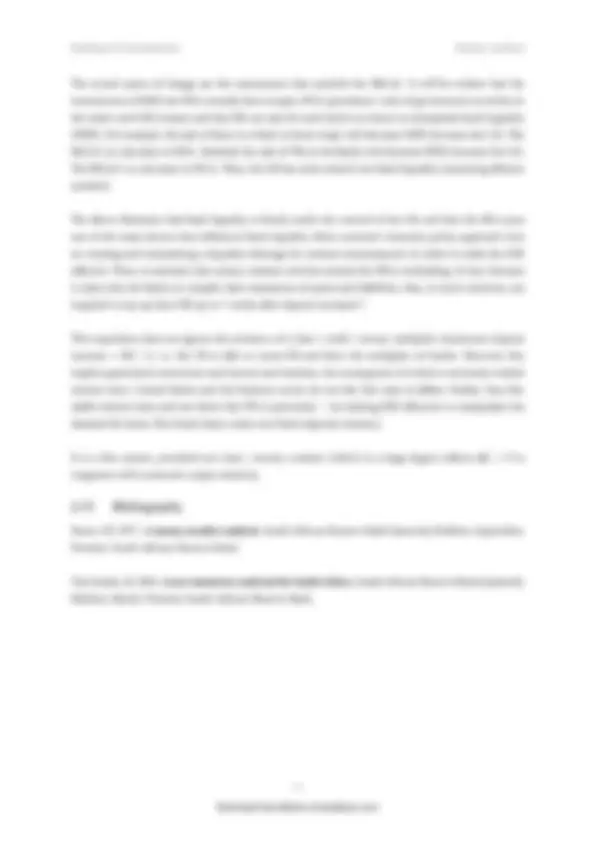
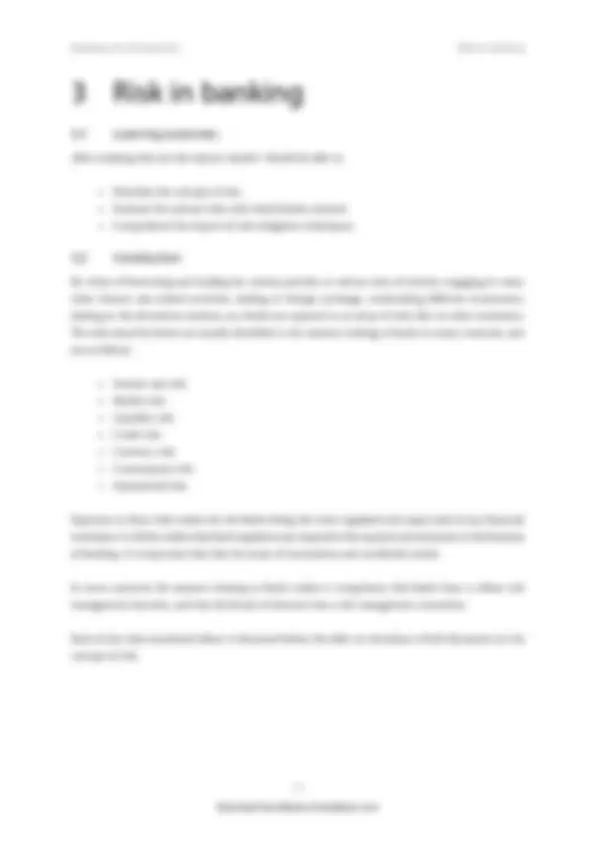

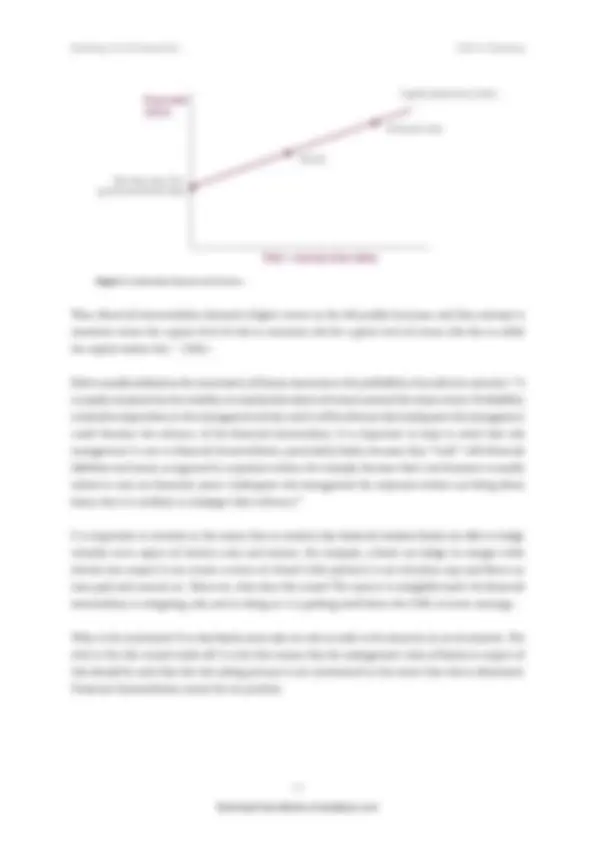

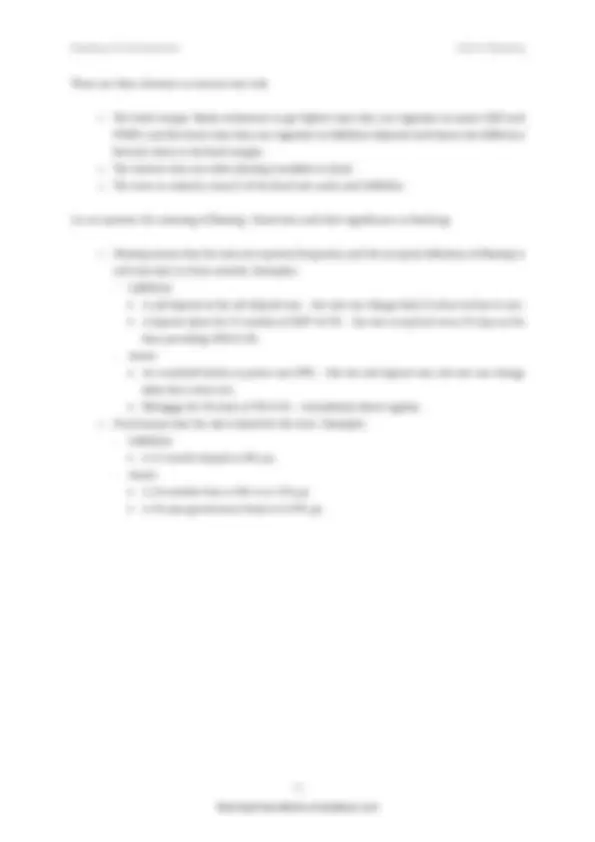
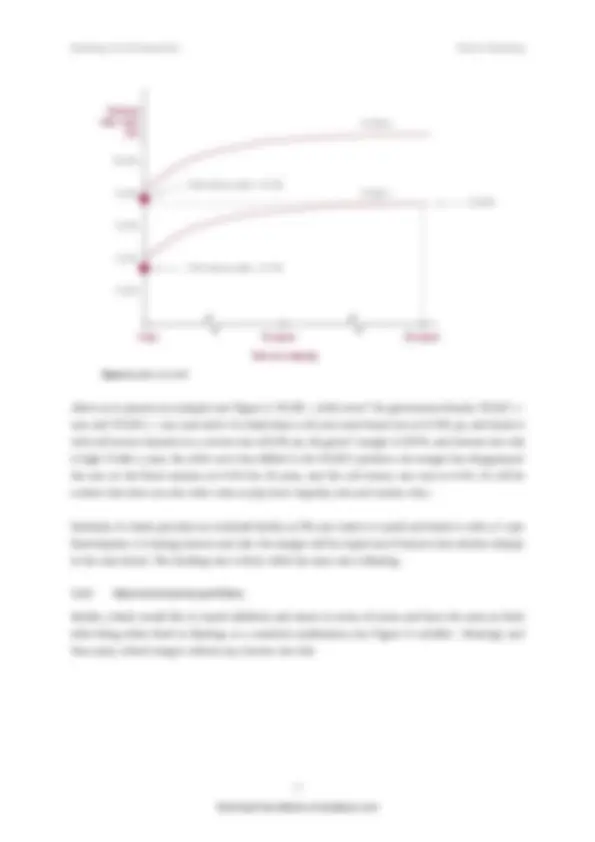
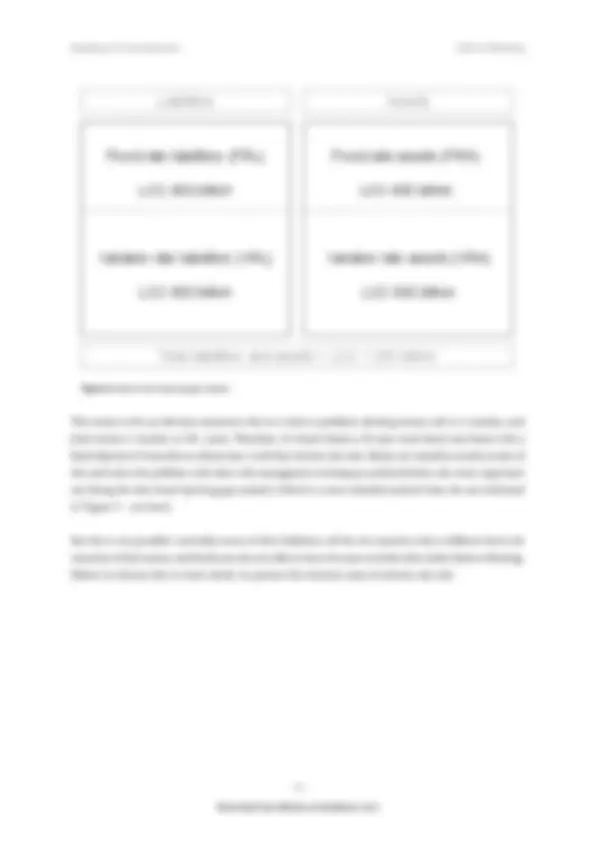

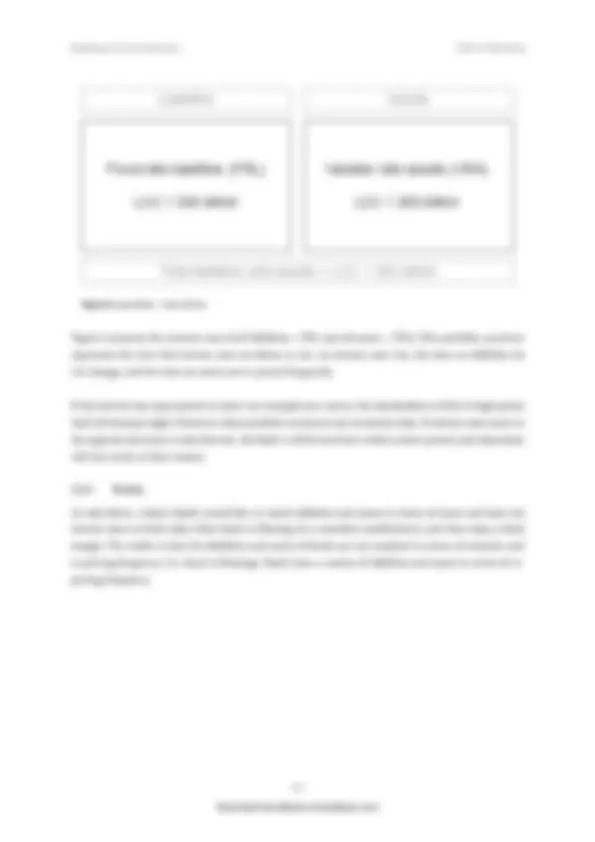
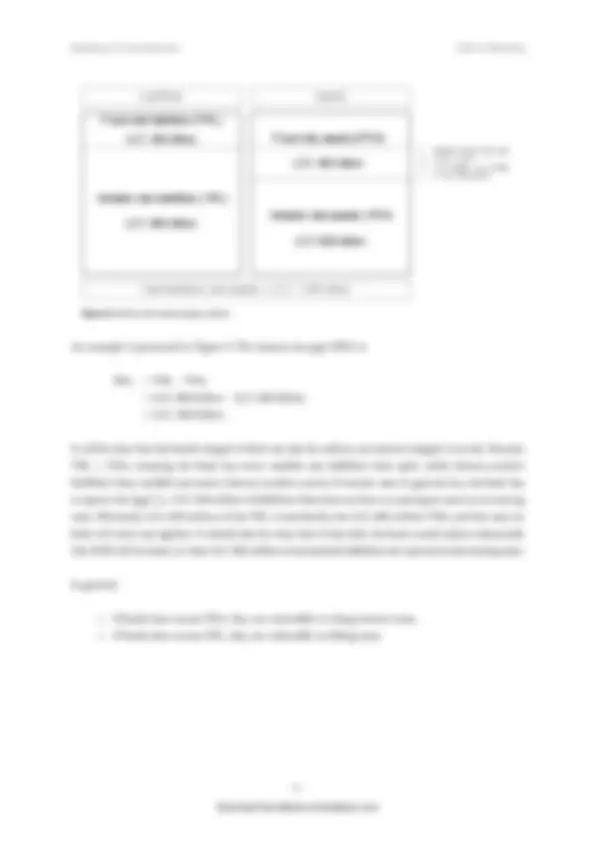
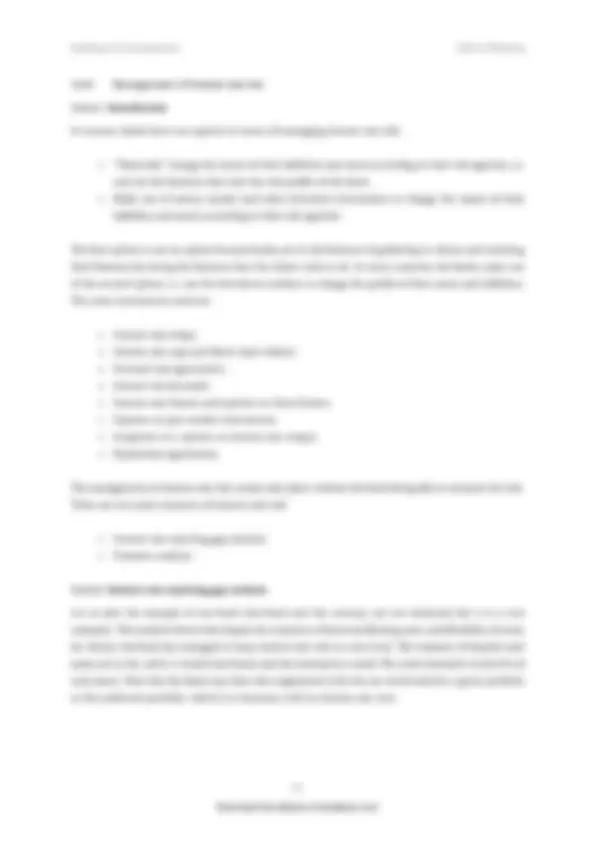

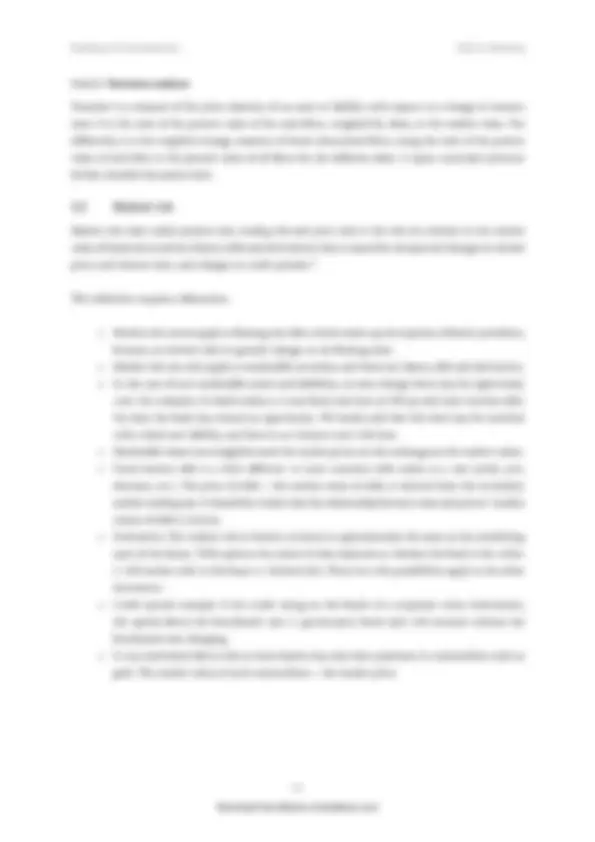

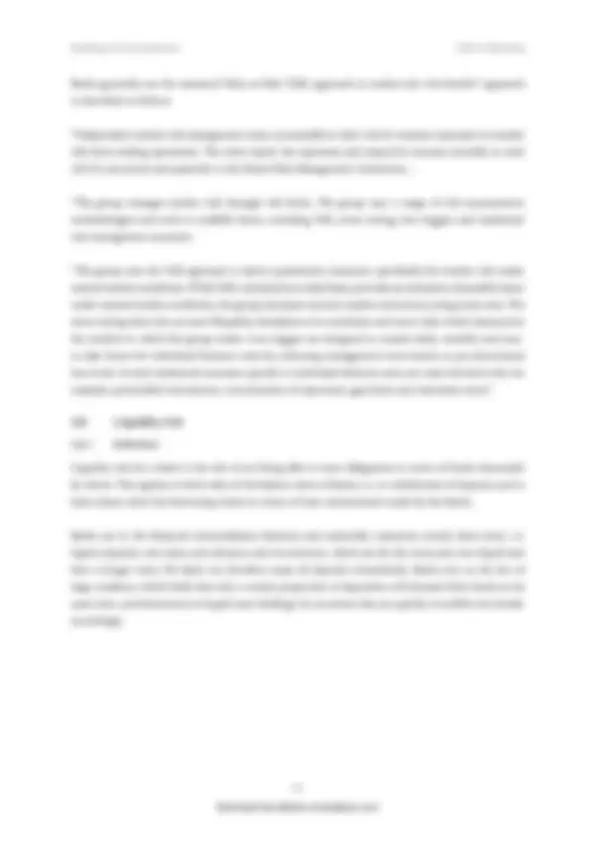


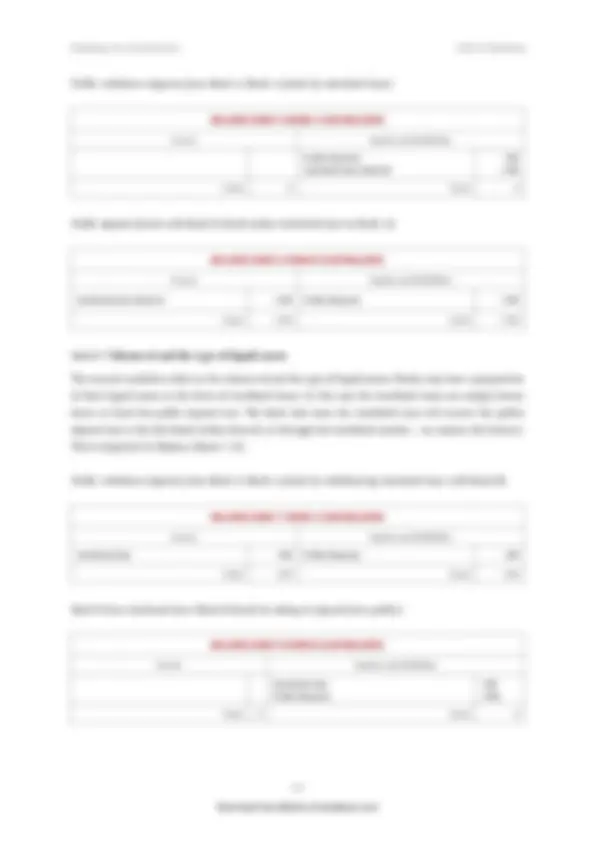
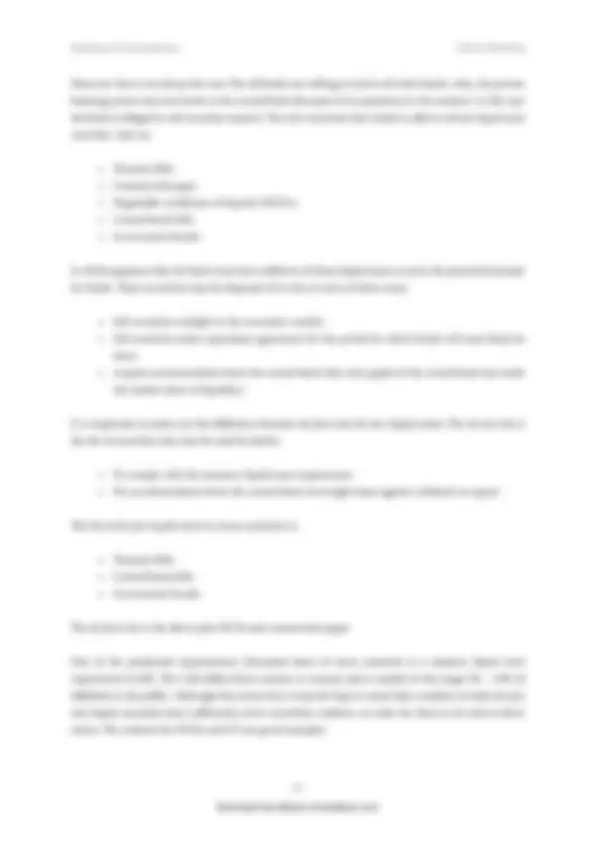
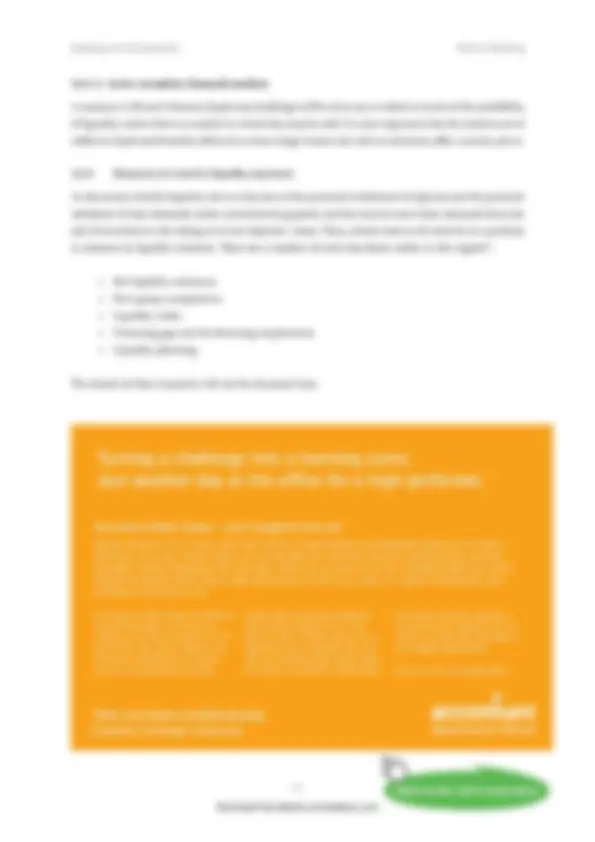
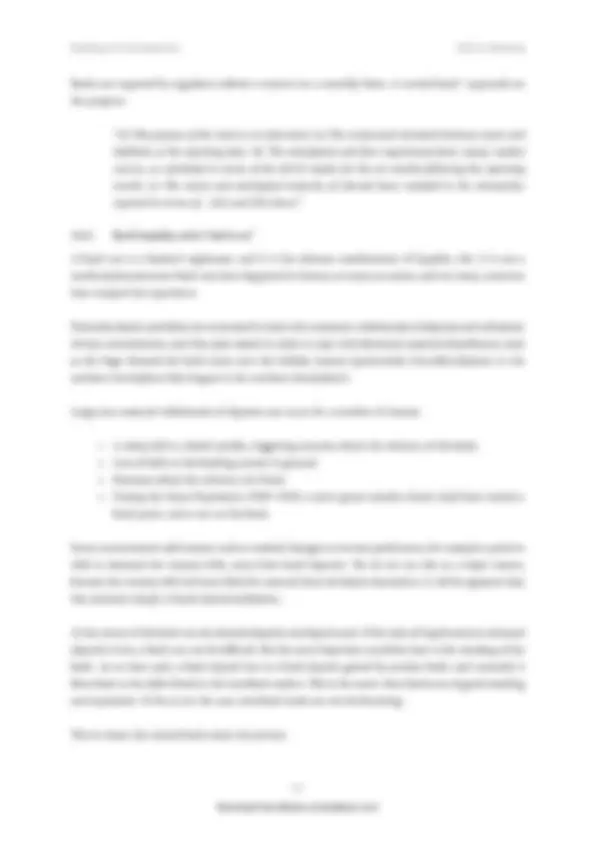
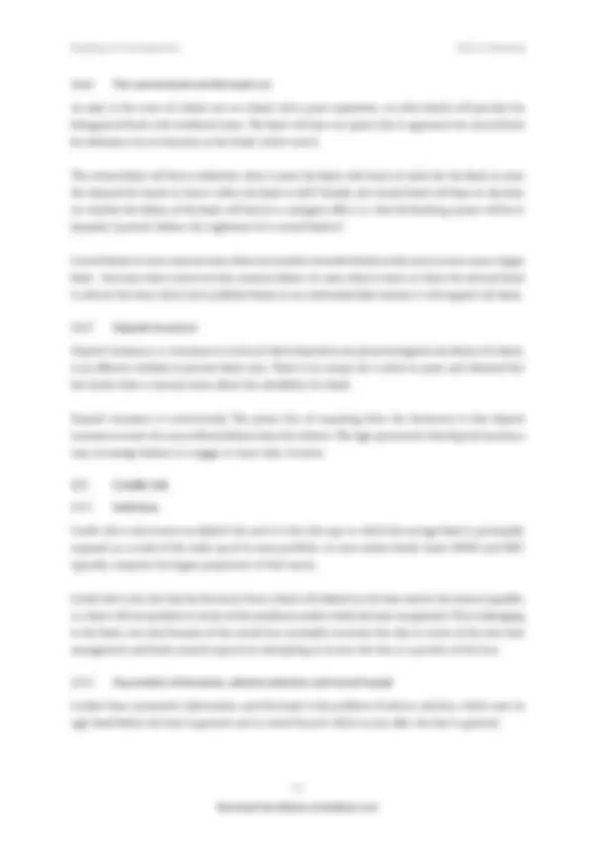
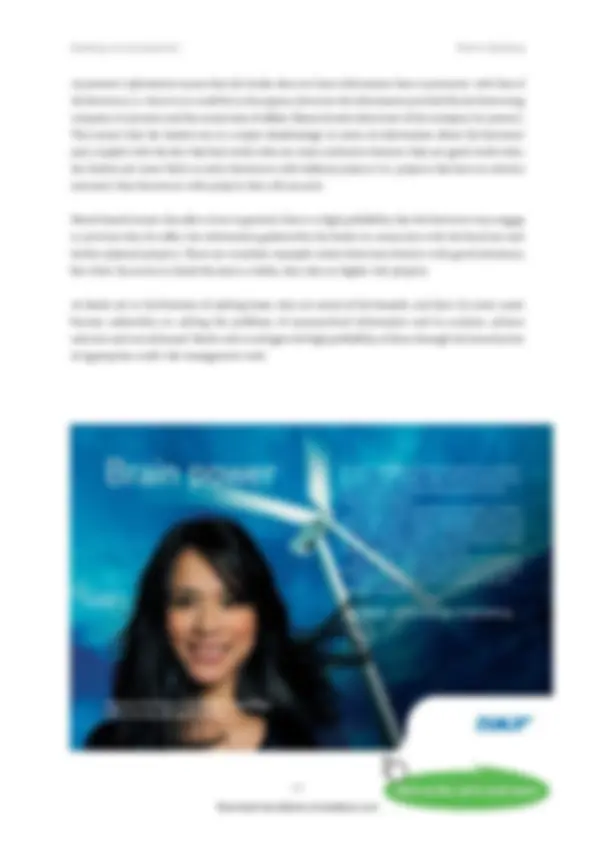
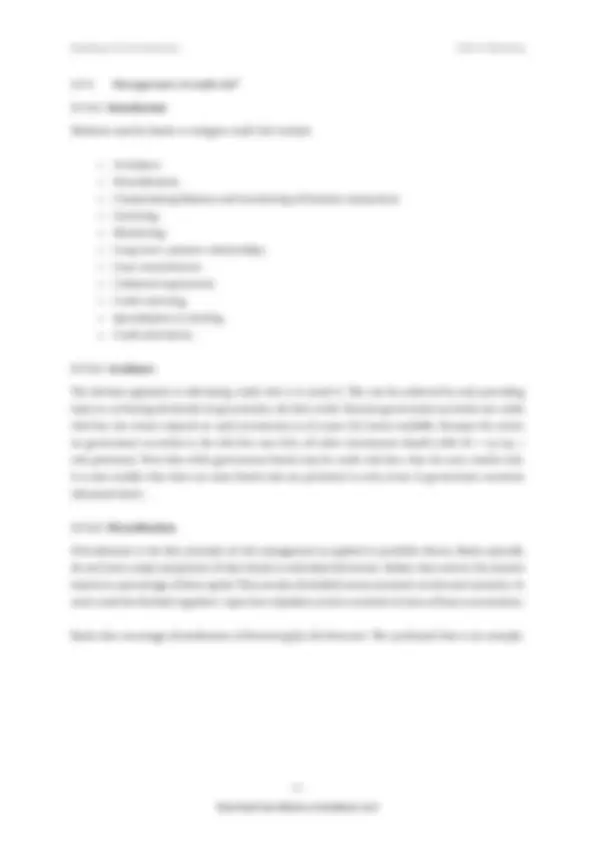
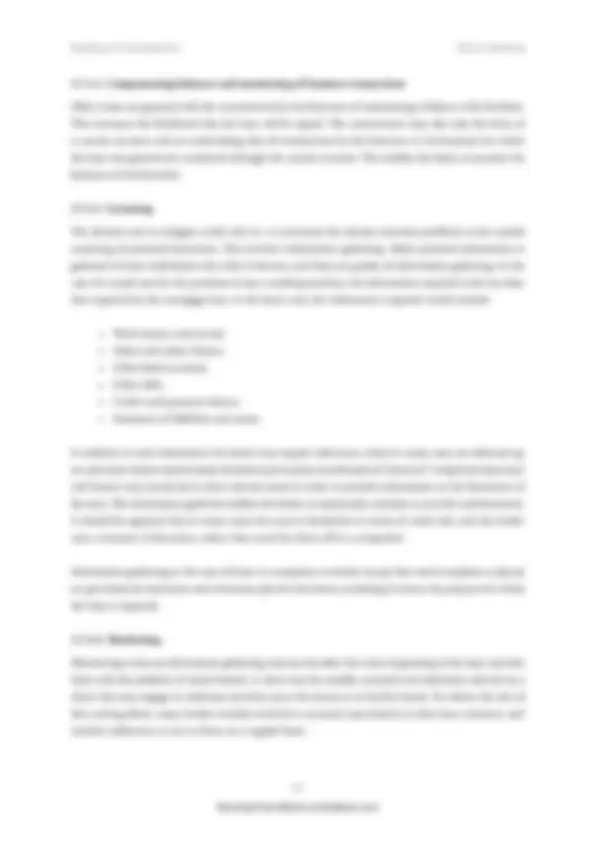
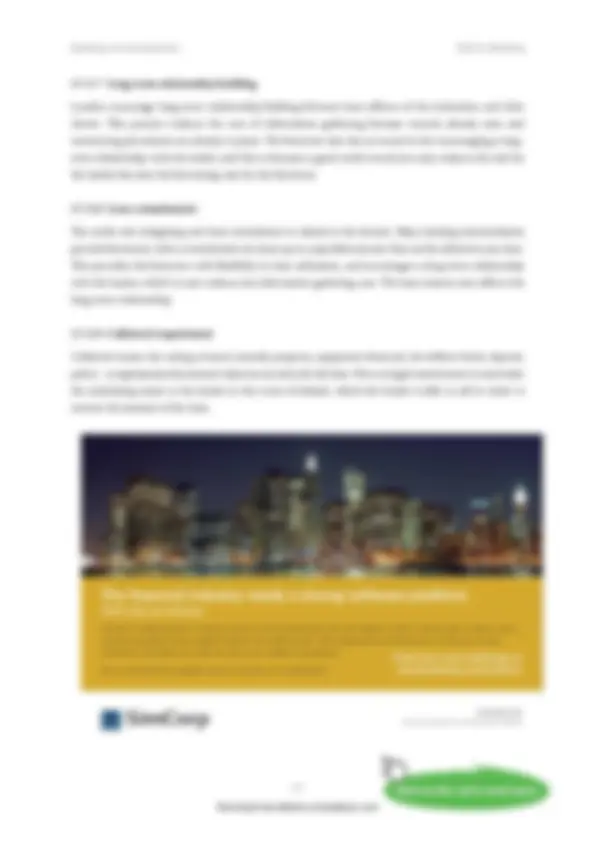
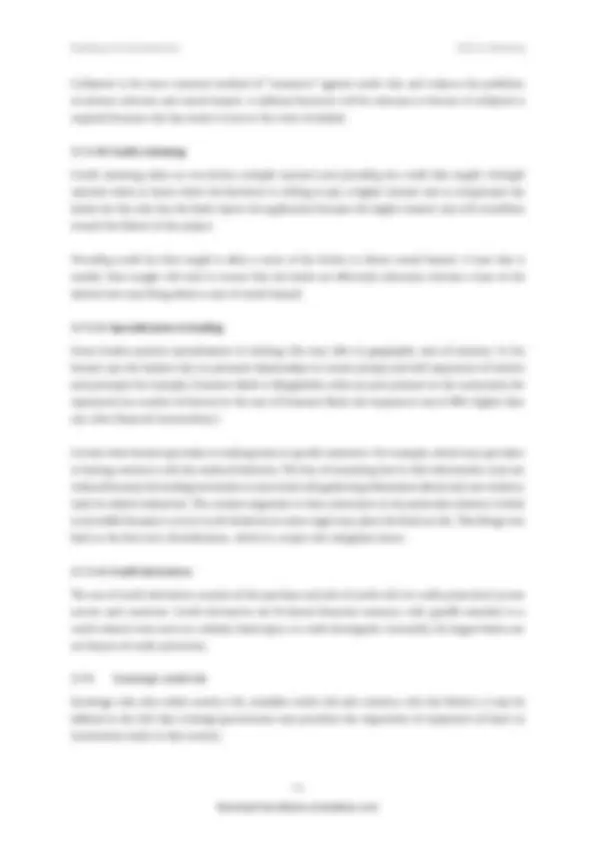
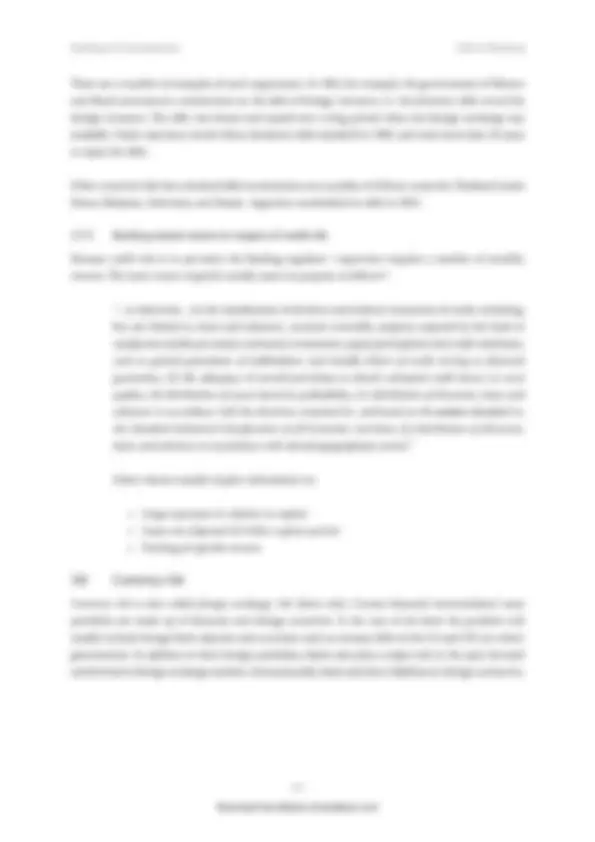



Study with the several resources on Docsity

Earn points by helping other students or get them with a premium plan


Prepare for your exams
Study with the several resources on Docsity

Earn points to download
Earn points by helping other students or get them with a premium plan
Community
Ask the community for help and clear up your study doubts
Discover the best universities in your country according to Docsity users
Free resources
Download our free guides on studying techniques, anxiety management strategies, and thesis advice from Docsity tutors
An introduction to the banking system, discussing the essence of banks, their role in money creation, and the risks they face. Banks act as intermediaries between borrowers and lenders, creating new money through loans and managing various types of risks. The document also touches upon the importance of central banks in controlling money creation and the different types of assets and liabilities in a bank's balance sheet.
Typology: Slides
1 / 144

This page cannot be seen from the preview
Don't miss anything!





























































































Banking: An Introduction
Download free books at
2
Banking: An Introduction
Banking: An Introduction
4
Contents
Contents
1 Essence of banking 7 1.1 Learning outcomes 7 1.2 Introduction 7 1.3 The financial system 8 1.4 Principles of banking 19 1.5 The balance sheet of a bank 29 1.6 Bibliography 39
2 Money creation 41 2.1 Learning objectives 41 2.2 Introduction 41 2.3 What is money? 42 2.4 Measures of money 44 2.5 Monetary banking institutions 45 2.6 Money and its role 46 2.7 Uniqueness of banks 47 2.8 The cash reserve requirement 51
Click on the ad to read more
Stand out from the crowd Designed for graduates with less than one year of full-time postgraduate workexperience, London Business School’s Masters in Management will expand your thinking and provide you with the foundations for a successful career in business. The programme is developed in consultation with recruiters to provide you with the key skills that top employers demand. Through 11 months of full-time study,you will gain the business knowledge and capabilities to increase your career choices and stand out from the crowd. Applications are now open for entry in September 2011. For more information visit www.london.edu/mim/ email mim@london.edu or call +44 (0)20 7000 7573
Masters in Management
London Regent’s Park Business School London NW1 4SAUnited Kingdom Tel +44 (0)20 7000 7573Email mim@london.edu www.london.edu/mim/
Fast-track
your career
Banking: An Introduction
5
Contents
2.9 Money creation does not start with a bank receiving a deposit 52 2.10 Money creation is not dependent on a cash reserve requirement 63 2.11 Is “money supply” a misnomer? 65 2.12 The money identity and the creation of money 66 2.13 Role of the central bank in money creation 68 2.14 How does a central bank maintain a bank liquidity shortage? 69 2.15 Bibliography 71
3 Risk in banking 72 3.1 Learning outcomes 72 3.2 Introduction 72 3.3 The concept of risk 73 3.4 Interest rate risk 75 3.5 Market risk 84 3.6 Liquidity risk 86 3.7. Credit risk 93 3.8 Currency risk 99 3.9 Counterparty risk 102 3.10 Operational risk 103 3.11 Bibliography 107
Click on the ad to read moreClick on the ad to read more
Linköping University –
innovative, highly ranked, European
Interested in Strategy and Management in International Organisations? Kick-start your career with an English-taught master’s degree.
Click here!
Banking: An Introduction
7
Essence of banking
1 Essence of banking
1.1 Learning outcomes
After studying this text the learner should / should be able to:
1.2 Introduction
Private sector banks play a significant role in the financial system and the real economy. They intermediate between all sectors of the economy and other financial intermediaries and institutions, and some of them provide the payments system, which most of us use every day.
Banks are unique in that their liabilities, bank notes and coins (N&C – central bank) and deposits (BD – private sector banks) are regarded as the means of payments / medium of exchange, which is the definition of money. So, put simply M3^1 = N&C + BD (held by the domestic non-bank private sector (NBPS). Because of this, banks are able to create additional money when required by individuals, businesses and government (with the assistance of the central bank). This unique feature, plus their balance sheet structure, places banks in a unique position in another way: they are inherently unstable, and therefore require robust regulation and supervision.
Banks are innovative, largely a function of intense competition, and they are therefore at the forefront of new developments, not only in banking but also in the wider financial markets. This makes regulation and supervision complex.
Banking: An Introduction
8
Essence of banking
In essence, banks are straightforward institutions: they take existing deposits (and loans to a small degree) and loan these funds, and, at the same time, make new loans and create new deposits (new money). However, while their basic function may be simple, the risks they assume are not, and this makes them complex. This text aims to cover banking in a comprehensible manner, and the following are the sections:
This section serves as introduction to banking and offers the following sections:
1.3 The financial system
1.3.1 Introduction
Securities INTERMEDIARIESFINANCIAL Securities
Indirect investment / financing
Securities
Direct investment / financing
BORROWERS^ ULTIMATE (def icit economicunits)
HOUSEHOLDSECTOR CORPORATESECTOR GOVERNMENTSECTOR FOREIGNSECTOR
ULTIMATELENDERS (surplus economicunits)
HOUSEHOLDSECTOR CORPORATESECTOR GOVERNMENTSECTOR FOREIGNSECTOR
Surplus funds
Surplus funds Surplus funds
Figure 1: simplified financial system
Banking: An Introduction
10
Essence of banking
The members of these sectors may be either lenders or borrowers or both at the same time. For example, a member of the household sector may have a mortgage bond (= borrower by the issue of a non- marketable debt instrument) and at the same time hold a balance on your accounts at the bank (= a lender; a holder of money).
1.3.3 Financial intermediaries
The second element is financial intermediaries. As seen in Figure 1, lending and borrowing takes place either directly between ultimate lenders and borrowers [e.g. when an individual buys a share (also called equity or stock) issued by a company], or indirectly via financial intermediaries. Financial intermediaries essentially solve the differences (or conflicts) that exist between ultimate lenders and borrowers in terms of their requirements: size, risk, return, term of loan, etc.
An example: your friend Johnny (a member of household sector) has LCC 2 10 000 he would like to lend out (= invest) for 30 days at low risk. You (a member of household sector) would like to borrow LCC 20 000 for 365 days to buy a car. You don’t mind who you borrow from, because you represent the risk, not the lender. Your and Johnny’s requirements don’t match at all; direct financing won’t work. He places his LCC 10 000 on deposit with a prime bank for 30 days and you borrow LCC 20 000 from the bank for 365 days. You and Johnny are both in high spirits; the bank satisfied your different requirements.
Financial intermediaries exist not only because of the divergence of requirements of lenders and borrowers, but for the specialised services they provide, such as insurance policies (insurance companies), retirement fund products (retirement funds), investment products (securities unit trusts, exchange traded funds), overdraft and deposit facilities (banks), and so on. The banks also provide a payments system, the system we don’t see but rely much on. The central bank provides an interbank settlement system (as we will see later).
ULTIMATELENDERS
HOUSEHOLDSECTOR CORPORATESECTOR GOVERNMENTSECTOR FOREIGNSECTOR
BORROWERS^ ULTIMATE HOUSEHOLDSECTOR CORPORATESECTOR GOVERNMENTSECTOR FOREIGNSECTOR
INVESTMENTVEHICLES CIs CISs AIs
CENTRALBANK
BANKS BANKS
Debt
Debt Debt & shares
Debt & shares
Debt & shares
Debt & shares Debt & shares
Deposits Deposits
Investmentvehicle securities (Pis)
DFIs, SPVs,QFIs: Finance co’sInvestment co’s
Debt
Interbankdebt
Interbankdebt
Figure 2: financial intermediaries
Figure 2: financial intermediaries
Banking: An Introduction
11
Essence of banking
The main financial intermediaries that exist in most countries and their relationships with one another are presented in Figure 2. A useful of classification of them is presented in Box 1. Note that the non- deposit intermediaries may also be seen as investment vehicles. Their products (= their liabilities), which can be called participation interests (PIs), are designed as investments for the household sector (and in some cases other financial intermediaries).
1.3.4 Financial instruments
The third element is financial instruments. They are also called securities; borrowers issue securities. They are therefore evidences of debt or shares. They also represent claims on the issuers / borrowers.
Ultimate lenders exchange money (deposits) for securities and ultimate borrowers exchange (issue new) securities for money. Financial intermediaries issue their own securities (e.g. deposits) and hold the securities of the ultimate borrowers (e.g. treasury bills). As you know, the banks have a special and unique role in this market for money in that they are able to create money (bank deposits) by making new loans (buying new securities).
Securities offer a return that is fixed (fixed-interest debt) or variable (variable-rate debt and share dividends). The capital amount of shares and debt is paid back after a period (bonds and preference shares) or not ever (perpetual bonds and shares). Securities are also either marketable of non-marketable. This is discussed in more detail in the next section.
Box 1: financial intermediaries MAINSTREAM FINANCIAL INTERMEDIARIES DEPOSIT INTERMEDIARIES Central bank (CB) Private sector banks NON-DEPOSIT INTERMEDIARIES (INVESTMENT VEHICLES) Contractual intermediaries (CIs) Insurers Retirement funds (pension funds, provident funds, retirement annuities) Collective investment schemes (CISs) Securities unit trusts (SUTs) Property unit trusts (PUTs) Exchange traded funds (ETFs) Alternative investments (AIs) Hedge funds (HFs) Private equity funds (PEF’s) QUASI-FINANCIAL INTERMEDIARIES (QFIs) Development finance institutions (DFIs) Special purpose vehicles (SPVs) Finance companies Investment trusts / companies Micro lenders
Banking: An Introduction
13
Essence of banking
The instruments of debt and shares and their issuers are as follows:
The household sector issues:
The corporate sector issues:
The government sector issues:
The foreign sector issues (into the local markets):
The deposit financial intermediaries (central and private sector banks) issue:
Banking: An Introduction
14
Essence of banking
The quasi-financial intermediaries issue:
The above may be summarized as in Table 2.
As we have indicated, it is rare that the individual invests in these financial instruments (the exceptions are bank deposits in the form of NNCDs and shares). Rather, they invest in these ultimate financial instruments via the investment vehicles, by buying their PIs.
Click on the ad to read moreClick on the ad to read moreClick on the ad to read moreClick on the ad to read moreClick on the ad to read more
Banking: An Introduction
16
Essence of banking
Figure 4: primary & secondary markets
LENDERS BORROWERS
the difference BUYERS SELLERS
the difference
Figure 4: primary & secondary markets
Primary market
Secondary market
Funds Securities
Funds Securities
LOCAL FINANCIAL MARKETS
capital market
Debt market / interest- bearing market / fixed-interest market Money market
Forex market = conduit
Listed share market
Bond market
Forex market = conduit
FOREIGN FINANCIAL MARKETS
FOREIGN FINANCIAL MARKETS
ST debt market
LT debt market
Share market
= Marketablepart = Marketablepart =
Figure 5: financial markets
There are a number of markets for financial instruments: the market for life policies (a primary market only), the market for PIs (also called units) of securities unit trusts (a primary market and a partial secondary market: the units are saleable to the issuer), the market for PIs in retirement funds (strictly a primary market), the deposit market (primary market for NNCDs and a secondary market for NCDs), the bond market (secondary market), and so on.
The financial markets are depicted in Figure 5. As we will show later, the money market should be defined as the short-term debt market (STDM = marketable and non-marketable debt), while the bond market is the marketable arm of the long-term debt market (LTDM).
Banking: An Introduction
17
Essence of banking
The money market (STDM) and the LTDM together make up the debt market (also known as the interest- bearing market and the fixed-interest market). The terms interest-bearing and fixed-interest oppose the debt market from the share market because the returns on shares are dividends and dividends are not fixed – they depend on the performance of companies. The LTDM and the share market is called the capital market.
The foreign exchange market is not a financial market, because lending and borrowing do not take place in this market. Rather, it is a conduit for foreign investors into local financial markets and for local investors into foreign financial markets.
In addition to these cash or spot markets [where the settlement of deals takes place a few days after transaction date (T+0)] we have the so-called derivative markets. They are comprised of instruments (forwards, futures, swaps, options and “others” such as weather derivatives) that are derived from and get their value from the spot financial markets. Whereas cash markets settle as soon as possible, derivative markets settle at some stage in the future.
Click on the ad to read moreClick on the ad to read moreClick on the ad to read moreClick on the ad to read moreClick on the ad to read moreClick on the ad to read more
your chance
to change
the world
Here at Ericsson we have a deep rooted belief that the innovations we make on a daily basis can have a profound effect on making the world a better place for people, business and society. Join us. In Germany we are especially looking for graduates as Integration Engineers for
Banking: An Introduction
19
Essence of banking
1.3.8 Allied participants on the financial system
From the above discussion it will be evident that there are a number of allied participants on the financial system. By this we mean participants other than the principals (those who have financial liabilities or assets or both). As we now know, the principals are:
The allied participants, who play a major role in terms of facilitating the lending and borrowing process (the primary market) and the secondary markets are the financial exchanges and their members. Also we need to mention the fund managers, who are actively involved in sophisticated financial market research and therefore play a major role price discovery, and the regulators of the financial markets. Thus the allied non-principal participants in the financial markets are:
1.4 Principles of banking
1.4.1 Introduction
The previous section presented the banking sector in the context of the financial system. This section goes a little further and covers:
1.4.2 Fundamental issues in banking
Banks are unique financial intermediaries.^4 They are the only intermediaries that intermediate between all ultimate lenders and borrowers and all other non-bank financial intermediaries. In this way they perform crucial functions, including providing the means of payments. In fact, they are such significant intermediaries that their very survival (particularly the large banks) is in the interests of the country; there exist social costs to their failure.
Banking: An Introduction
20
Essence of banking
For this reason, banks are the most regulated intermediaries. In most countries the central bank regulates and supervises the banks, and they are obliged to have large departments and skilled persons to carry out this function. The banks are innovative and create new products continually, because of the competitive nature of banking, making the task of the supervisor challenging.
The hardware and software systems requirements of banks are sophisticated, not only because of the complex deals they undertake, but to cater for the strict and diverse reporting requirements of banks. This and the high capital resource requirements create substantial barriers to entry.
Banks exist because of the information costs they carry and because of the demand for liquidity by deposit clients. Banks earn their keep by the management of financial risks, and this is what differentiates them from other companies. Essentially, they are risk managers. According to Heffernan^5 , the “organisation of risk management within a bank is as important as the development of risk management techniques and instruments to facilitate risk management…. There is no such thing as a generic banking strategy. But banks need to be planning how, in the future, existing competitive advantage is going to be sustained and extended. The outlook for banks is optimistic, provided they can create, maintain, and sustain a competitive advantage in the products and services (old and new) they offer.”
Click on the ad to read moreClick on the ad to read moreClick on the ad to read moreClick on the ad to read moreClick on the ad to read moreClick on the ad to read moreClick on the ad to read more
www.fuqua.duke.edu/ globalmba
BUSINESS HAPPENSBUSINESS HAPPENS HERE.